In this guide, we’ll explore the compostability of paper coffee filters, best disposal practices, and eco-friendly alternatives such as custom paper coffee cups for businesses looking to minimize their environmental footprint.
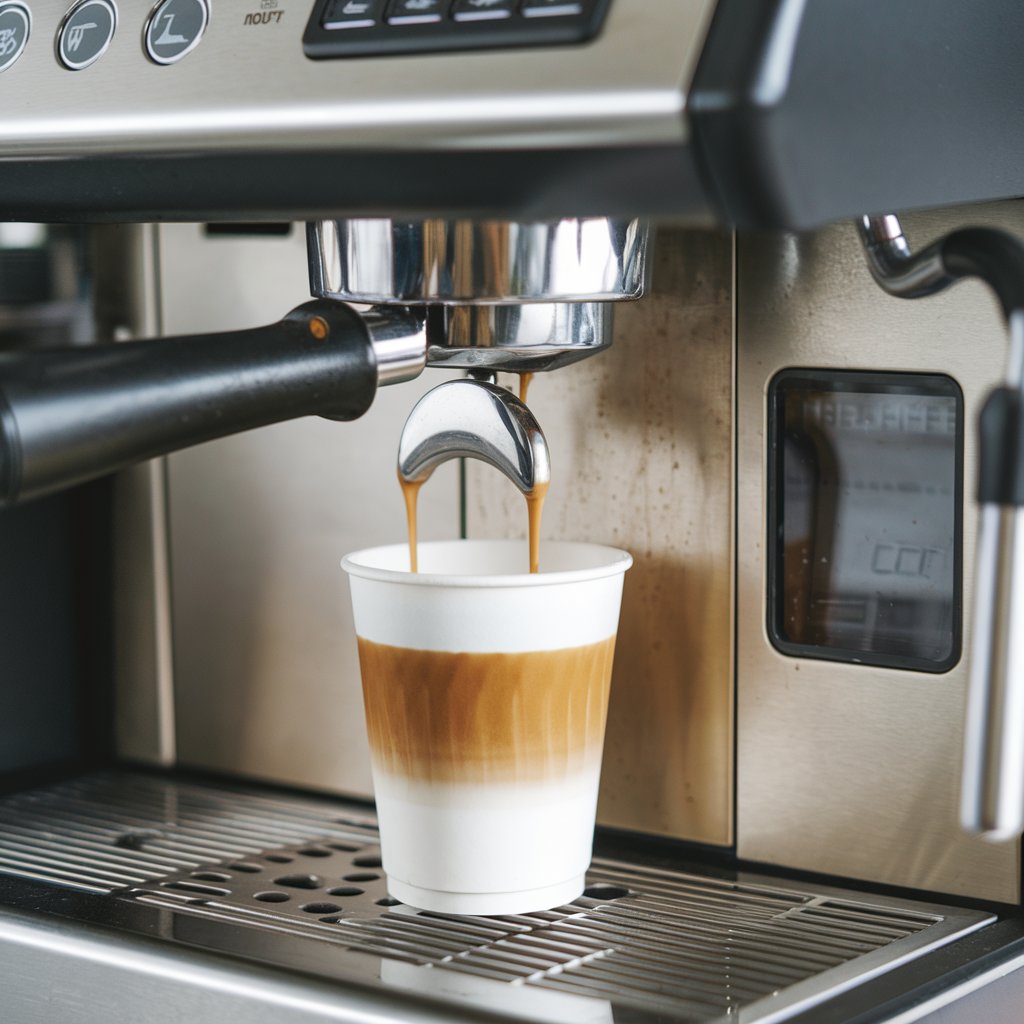
Are Paper Coffee Filters Compostable?
Yes! Most unbleached paper coffee filters are compostable. Since they are made from natural paper fibers, they break down easily in a composting environment, enriching the soil with organic material. However, not all paper filters are the same. For instance:
- Unbleached Coffee Filters – These are the best option for composting since they are free from chemicals and decompose quickly.
- Bleached Coffee Filters – While still compostable, these filters undergo chemical processing, which may not be ideal for organic composting.
- Paper Filters with Additives – Some contain synthetic fibers or chemical coatings, making them non-compostable. Always check the packaging for composting suitability.
Reusable Filters vs. Disposable Filters: Which is Better?
While composting disposable coffee filters is eco-friendly, switching to a reusable filter can provide even greater benefits:
- Waste Reduction – A stainless steel or cloth filter can last for years, eliminating the need for single-use paper filters.
- Cost Savings – Investing in a high-quality reusable filter reduces long-term expenses.
- Enhanced Flavor – Many coffee enthusiasts believe reusable filters preserve natural oils, leading to a richer taste.
- Easy Maintenance – Most reusable filters require simple rinsing and occasional deep cleaning.
Going Beyond Filters: Sustainable Coffee Habits
While composting paper coffee filters is a great step toward sustainability, businesses and individuals can further reduce their environmental impact with eco-friendly coffee cups and packaging.
Why Choose Eco-Friendly Coffee Cups?
- Biodegradable Materials – Many modern paper coffee cups use plant-based linings instead of plastic, making them easier to compost.
- Custom Branding Opportunities – Businesses can promote their brand while staying environmentally responsible with custom paper coffee cups featuring a logo.
- Consumer Appeal – More customers are choosing coffee shops that prioritize sustainability, boosting brand reputation and attracting eco-conscious consumers.
More Ways to Make Your Coffee Routine Eco-Friendly
- Use a reusable coffee filter (such as stainless steel or cloth) to eliminate waste.
- Opt for fair-trade and organic coffee to support sustainable farming practices.
- Choose recyclable or compostable coffee packaging to minimize waste.
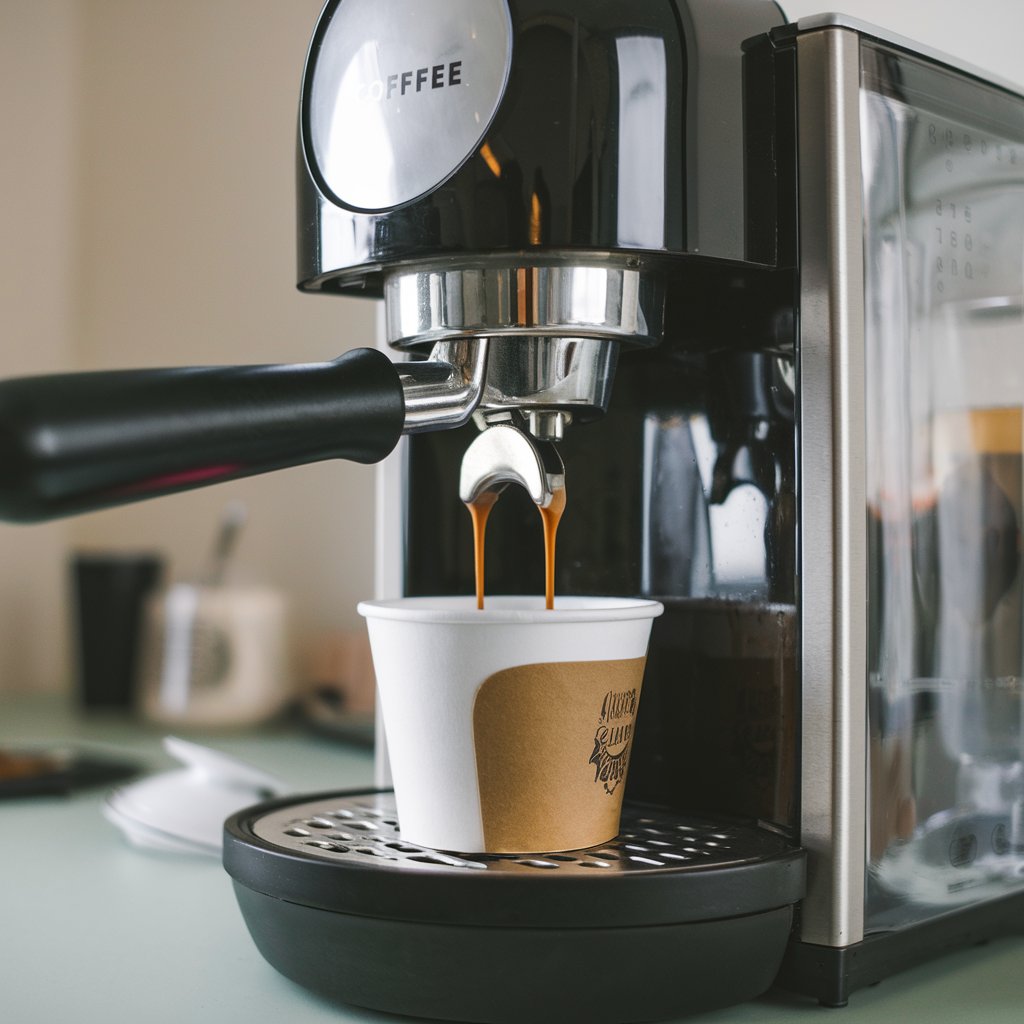
FAQs About Coffee Filters and Sustainability
1. Are Paper Coffee Cups Recyclable?
Most standard paper coffee cups have a thin plastic lining, making them difficult to recycle in curbside programs. However, some eco-friendly coffee cups use plant-based linings that are fully recyclable and compostable.
2. Do Coffee Filters Contain Plastic?
Most traditional paper coffee filters do not contain plastic, but some specialty filters may have synthetic fibers or microplastic coatings. Always check the product label.
3. Are There Any Coffee Filters That Are Not Compostable?
Yes. Some coffee filters are non-compostable due to chemical treatments, synthetic reinforcements, or plastic-based coatings. For sustainability, opt for unbleached, all-natural paper filters.
Conclusion
Composting paper coffee filters is an easy and impactful way to reduce coffee-related waste. However, sustainability goes beyond just filters. By switching to eco-friendly coffee cups and packaging, businesses and consumers can make a significant difference.
If you’re looking for custom paper coffee cups with a logo that align with your eco-friendly mission, Takeaway Pack offers high-quality, sustainable solutions. Contact us today to explore our compostable coffee packaging options!
]]>Understanding proper recycling practices and choosing sustainable custom pizza boxes can help restaurants minimize waste and reduce their environmental footprint. This guide explores whether greasy pizza boxes can be recycled, eco-friendly packaging alternatives, and best practices for sustainable waste management.
Are Pizza Boxes Recyclable? The Truth About Grease and Cardboard
Pizza boxes are typically made from corrugated cardboard, a highly recyclable material. However, once they become contaminated with grease and food residue, the recycling process is compromised.
During recycling, cardboard is mixed with water to create a pulp. Grease prevents paper fibers from bonding properly, weakening the final recycled product. Food particles introduce contaminants, potentially ruining entire batches of recycled material.
So, what can be done with greasy pizza boxes?
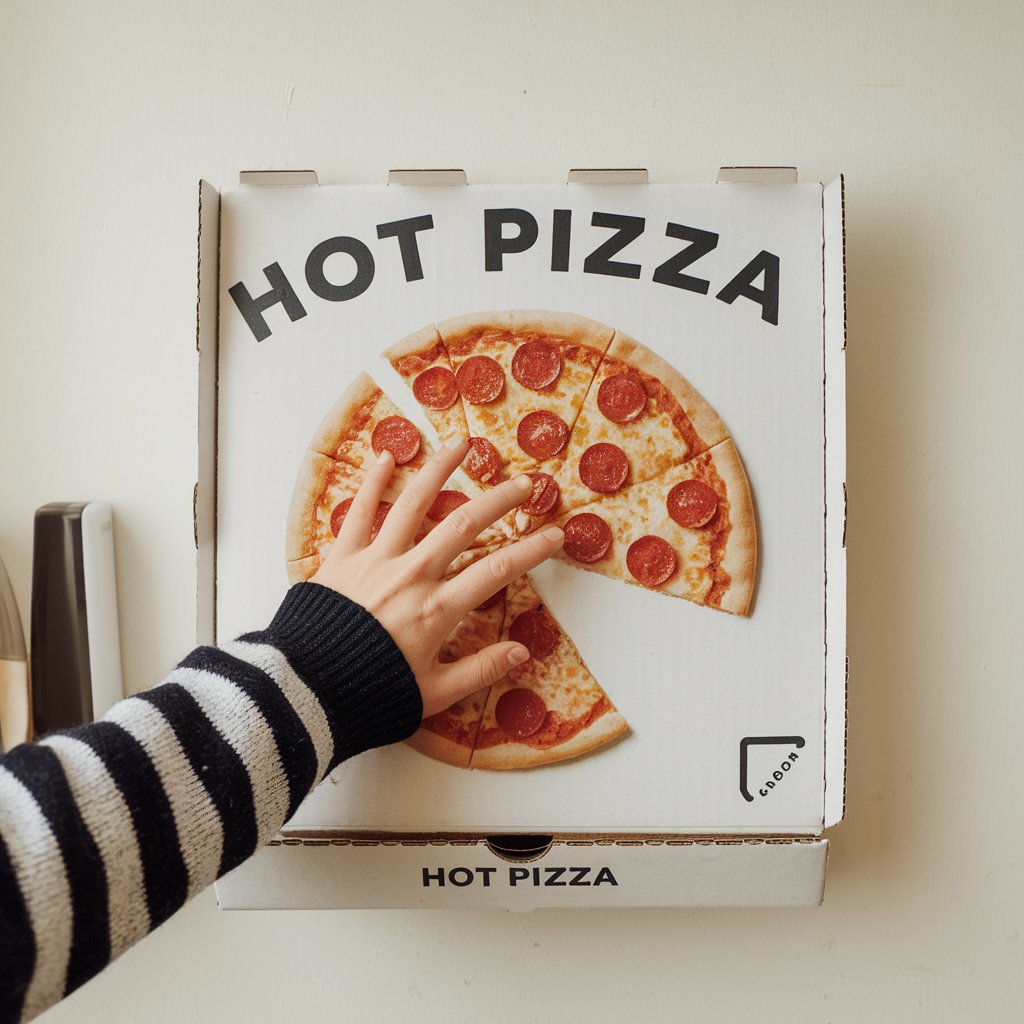
How to Handle Greasy Pizza Boxes
The recyclability of pizza boxes depends on local regulations and the extent of contamination. Here’s what restaurants and consumers can do:
 Check Local Recycling Guidelines – Some recycling programs accept greasy boxes, while others reject them. Research your area’s policies.
Check Local Recycling Guidelines – Some recycling programs accept greasy boxes, while others reject them. Research your area’s policies.
 Tear Off Clean Sections – If part of the box is free from grease, separate it for recycling and dispose of the soiled portion properly.
Tear Off Clean Sections – If part of the box is free from grease, separate it for recycling and dispose of the soiled portion properly.
 Compost the Box – Many composting facilities accept uncoated cardboard, making greasy pizza boxes a great option for organic waste disposal.
Compost the Box – Many composting facilities accept uncoated cardboard, making greasy pizza boxes a great option for organic waste disposal.
 Use Special Recycling Programs – Some companies offer specialized recycling solutions for food-contaminated cardboard, allowing restaurants to participate in sustainable waste management initiatives.
Use Special Recycling Programs – Some companies offer specialized recycling solutions for food-contaminated cardboard, allowing restaurants to participate in sustainable waste management initiatives.
Eco-Friendly Custom Pizza Boxes: A Sustainable Alternative
To minimize waste and promote sustainability, restaurants can choose custom pizza boxes designed for easy recycling or composting. Consider these eco-friendly packaging solutions:
1⃣ Compostable Pizza Boxes – Made from biodegradable materials, these break down naturally and reduce landfill waste.
2⃣ Recyclable Coated Boxes – Some manufacturers offer grease-resistant coatings that allow for easier recycling while still being customizable for branding.
3⃣ Reusable Pizza Boxes – An innovative approach where customers return durable, washable pizza containers, cutting down on single-use packaging.
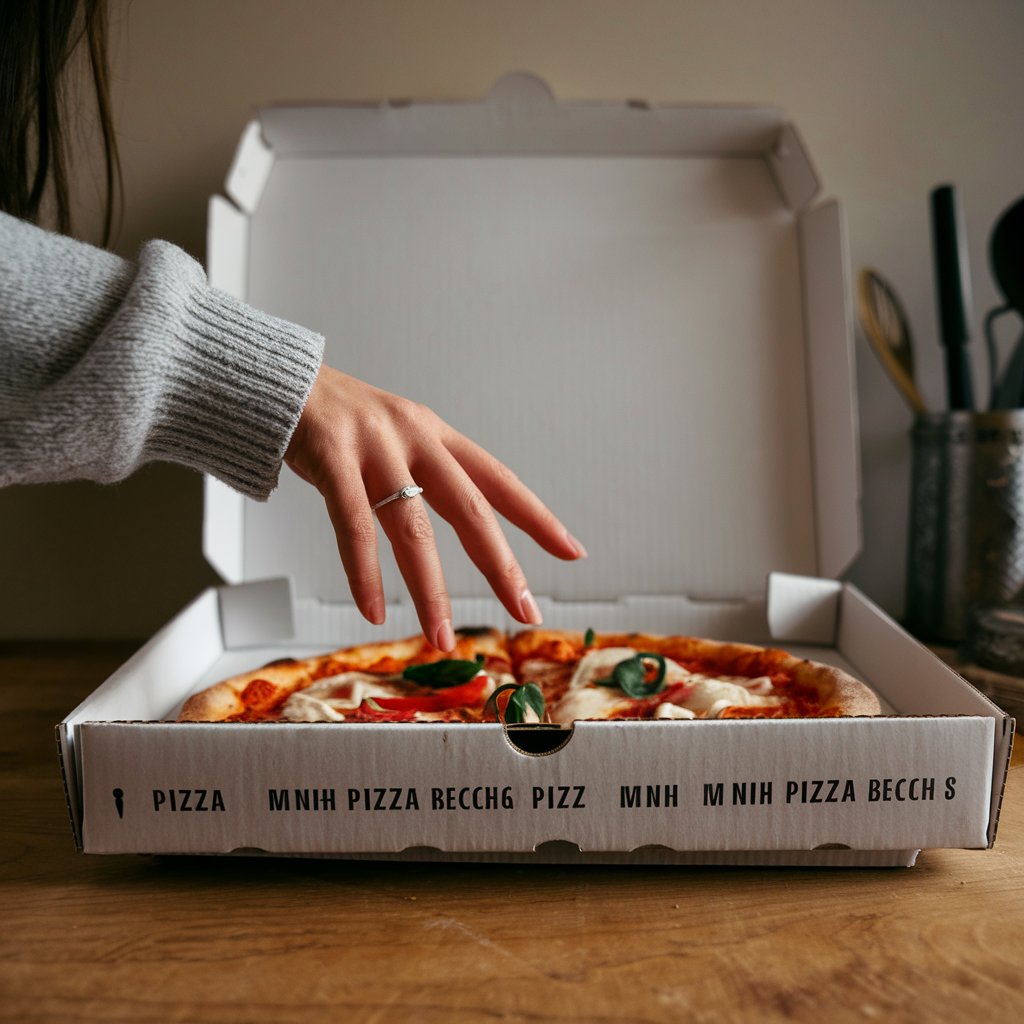
Best Practices for Restaurants: Implementing Sustainable Packaging
Restaurants play a key role in promoting responsible packaging disposal. Here’s how to integrate eco-friendly solutions into your operations:
 Educate Customers About Recycling – Add simple recycling instructions on your pizza boxes, such as:
Educate Customers About Recycling – Add simple recycling instructions on your pizza boxes, such as:
- “Tear off and recycle clean sections. Compost the greasy parts.”
- “Check local recycling rules before disposal.”
- “Made from 100% recyclable materials.”
 Choose Sustainable Packaging Suppliers – Work with suppliers that offer:
Choose Sustainable Packaging Suppliers – Work with suppliers that offer:
- Recycled or biodegradable materials
- Grease-resistant coatings without harmful chemicals
- Compostable or reusable packaging options
 Reduce Excess Packaging – Use right-sized boxes to minimize waste and cut down material costs.
Reduce Excess Packaging – Use right-sized boxes to minimize waste and cut down material costs.
 Offer Incentives for Sustainable Choices – Encourage eco-friendly practices by providing:
Offer Incentives for Sustainable Choices – Encourage eco-friendly practices by providing:
- Discounts for returning reusable boxes
- Rewards for composting pizza boxes
- Digital receipts to reduce paper waste
Environmental Benefits of Sustainable Pizza Boxes
Switching to eco-friendly pizza packaging benefits both the environment and your business:
 Reduces Landfill Waste – Proper recycling and composting of pizza boxes prevent unnecessary waste from ending up in landfills.
Reduces Landfill Waste – Proper recycling and composting of pizza boxes prevent unnecessary waste from ending up in landfills.
 Lowers Carbon Footprint – Using recycled materials and biodegradable options conserves resources and reduces environmental impact.
Lowers Carbon Footprint – Using recycled materials and biodegradable options conserves resources and reduces environmental impact.
 Enhances Brand Reputation – Customers prefer environmentally responsible businesses. Sustainable packaging differentiates your restaurant from competitors and builds brand loyalty.
Enhances Brand Reputation – Customers prefer environmentally responsible businesses. Sustainable packaging differentiates your restaurant from competitors and builds brand loyalty.
Conclusion
So, can greasy pizza boxes be recycled? The answer depends on contamination levels and local recycling policies. While grease-stained boxes are often unsuitable for regular recycling, composting and special recycling programs offer sustainable alternatives.
Restaurants can take action by choosing eco-friendly pizza boxes, educating customers on proper disposal, and implementing sustainable packaging strategies. Takeaway Pack offers custom pizza box solutions designed for easy recycling and branding, helping restaurants reduce waste while enhancing their image.
Ready to make your pizza packaging more sustainable? Explore our collection today and customize eco-friendly pizza boxes for your restaurant!
]]>In this guide, we’ll walk you through the most common pizza box sizes and help you make an informed decision for your business.
✅ 14-Inch Pizza Box is the Most Popular – Ideal for medium-sized pizzas, serving small families or couples, and balancing portion size with cost-effectiveness.
✅ Match Box Size to Your Menu – Choose 12-inch or 14-inch for standard pizzas, and 16-inch or 18-inch for larger, party-sized options.
✅ Storage & Delivery Efficiency – Opt for sizes that fit your kitchen space and ensure easy stacking and transport.
✅ Branding & Customization Matter – Custom pizza boxes with logos help reinforce your brand and create a memorable customer experience.
✅ Eco-Friendly Options Available – Sustainable, recyclable packaging helps reduce environmental impact while keeping pizzas fresh.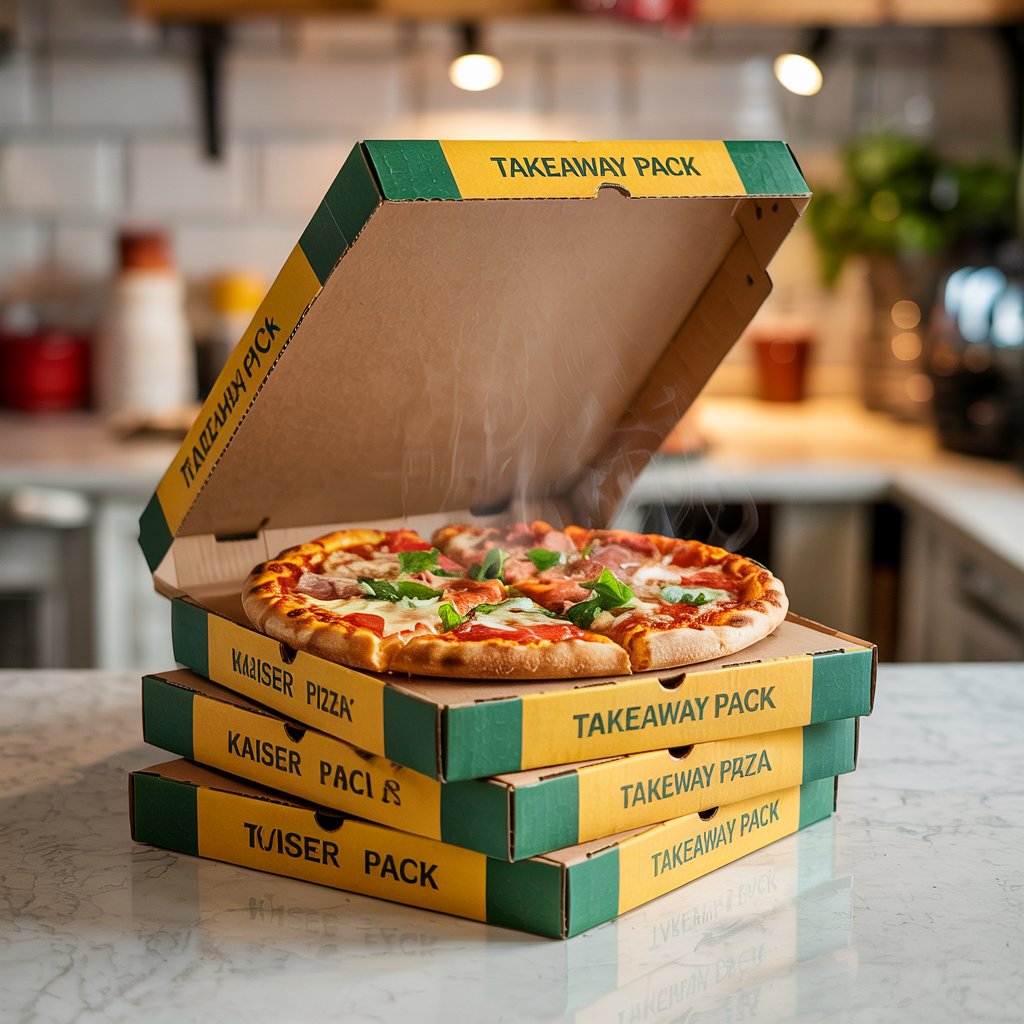
What Is the Standard Pizza Box Size?
Choosing the right pizza box size ensures that your pizzas remain fresh and intact during delivery or takeaway. Here’s a breakdown of standard pizza sizes and their corresponding box dimensions:
Pizza Box Size Chart (A visual representation of pizza sizes and matching box dimensions would be ideal here.)
Using the correct box size ensures a snug fit, which helps maintain temperature, freshness, and presentation quality.
| 10-inch Pizza | 10″ L x 10″ W x 2″ H | This size is ideal for individual servings or smaller personal pizzas. |
| 12-inch Pizza | 12″ L x 12″ W x 2″ H | This is one of the most common sizes for medium pizzas, making it a popular choice for many restaurants. |
| 14-inch Pizza | 14″ L x 14″ W x 2″ H | The 14-inch pizza is often seen as the best balance between portion size and practicality for both customers and businesses. |
| 16-inch Pizza | 16″ L x 16″ W x 2″ H | Large pizzas, perfect for group orders or sharing, fit into this box size. |
| 18-inch Pizza | 18″ L x 18″ W x 2″ H | For extra-large pizzas, typically seen in pizza chains or for party-sized servings, the 18-inch box is commonly used. |
What Is the Most Popular Pizza Box Size?
You may be wondering: What is the most commonly used pizza box size? While this depends on customer preferences and menu offerings, the 12-inch and 14-inch pizza boxes are the most popular choices in the industry.
Among them, the 14-inch pizza box stands out as the top seller. Why? Because it strikes the perfect balance—it’s large enough to serve a small group but compact enough for easy handling and delivery. Additionally, it provides pricing flexibility, making it a go-to option for many restaurants.
Why Is the 14-Inch Pizza Box the Best Choice?
The 14-inch pizza box is widely favored for several reasons:
- Perfect for Medium-Sized Pizzas – It fits a medium pizza, the most commonly ordered size.
- Ideal Portion Size – A 14-inch pizza is great for small families or couples, offering enough food without waste.
- Versatile for Different Pizzas – Whether it’s classic cheese, pepperoni, or specialty toppings, this size accommodates various pizza types.
- Cost-Effective – It provides a balance between portion size and affordability, making it a smart choice for most pizzerias.
- Convenient for Storage & Delivery – The box size makes stacking, storing, and delivering pizzas much easier.
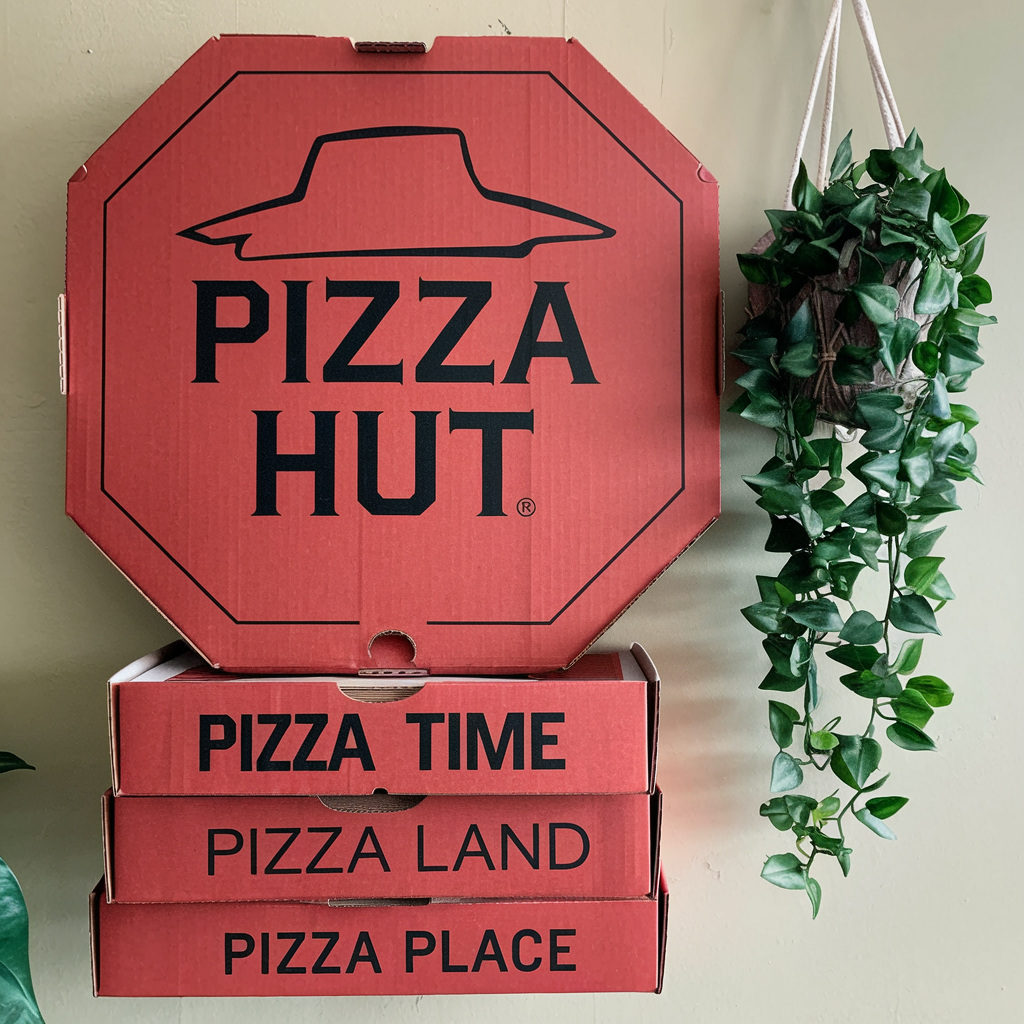
How to Choose the Right Pizza Box Size for Your Restaurant
When selecting pizza box sizes, consider the following factors:
- Know Your Menu – If you primarily offer small or medium pizzas, a 12-inch or 14-inch box is a great fit. For party-sized options, stock 16-inch and 18-inch boxes.
- Understand Your Customers – Do your customers prefer larger pizzas for sharing, or do they lean toward individual-sized portions?
- Consider Storage Space – Larger boxes take up more storage, so choose sizes that align with your restaurant’s space constraints.
- Customization Options – Branded pizza boxes help your business stand out. Takeaway Pack offers customized pizza boxes with logos and eco-friendly materials to enhance your brand image.
Why Choose Takeaway Pack for Your Pizza Boxes?
At Takeaway Pack, we specialize in high-quality, durable pizza boxes designed for both protection and branding. Here’s why we’re the ideal supplier for your restaurant:
 Custom Branding – We create custom pizza boxes with your logo and unique designs to reinforce your brand identity.
Custom Branding – We create custom pizza boxes with your logo and unique designs to reinforce your brand identity.
 Wide Range of Sizes – Whether you need small, medium, or large pizza boxes, we offer various options to match your menu.
Wide Range of Sizes – Whether you need small, medium, or large pizza boxes, we offer various options to match your menu.
 Durable & Reliable – Our sturdy materials ensure pizzas stay intact during delivery, preventing moisture and heat loss.
Durable & Reliable – Our sturdy materials ensure pizzas stay intact during delivery, preventing moisture and heat loss.
 Eco-Friendly Solutions – Sustainability matters. We provide recyclable and eco-friendly packaging to help reduce environmental impact.
Eco-Friendly Solutions – Sustainability matters. We provide recyclable and eco-friendly packaging to help reduce environmental impact.
Conclusion
The 14-inch pizza box is the most popular choice due to its versatility, affordability, and convenience. However, selecting the right size ultimately depends on your menu, customer preferences, and storage capacity.
At Takeaway Pack, we offer premium custom pizza boxes to meet your business needs. Whether you need branding, eco-friendly options, or a variety of sizes, we’re here to help.
Ready to enhance your pizza packaging? Explore our collection today and start customizing your perfect pizza boxes!
]]>Key Takeaways
1. Leverage Social Media – Use Instagram, TikTok, and Facebook to showcase high-quality food images, engage with customers, and collaborate with influencers.
2. Implement a Loyalty Program – Encourage repeat visits with digital rewards, punch cards, and exclusive member deals.
3. Engage with the Local Community – Sponsor local events, sports teams, or school fundraisers to build brand recognition and attract new customers.
4. Prioritize Speed & Convenience – Optimize kitchen workflow, offer drive-thru, curbside pickup, and mobile ordering for seamless service.
5. Utilize Targeted Email Marketing – Collect and segment customer emails to send personalized discounts, promotions, and special offers.
6. Partner with Delivery Apps – Expand reach by listing your restaurant on Uber Eats, DoorDash, and GrubHub to capture online orders.
7. Enhance Restaurant Design – Improve curb appeal, update interiors, and create an eye-catching, easy-to-read menu for a better customer experience.
8. Work with Influencers & Food Bloggers – Offer free meals to influencers for social media exposure and authentic word-of-mouth marketing.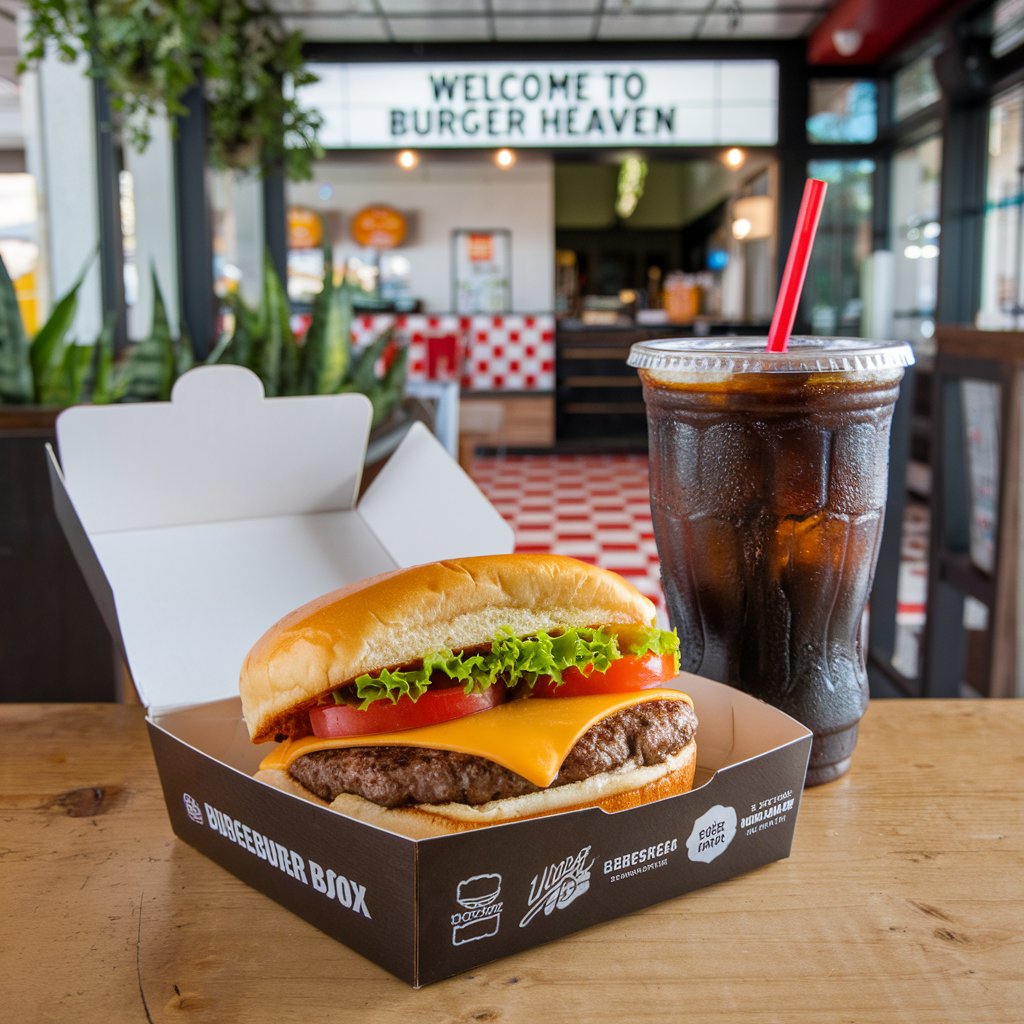
1. Build a Strong Social Media Presence
Social media is a game-changer for restaurant marketing. Platforms like Instagram, Facebook, and TikTok are perfect for showcasing mouthwatering burger photos, promotions, and customer engagement. Leverage:
- High-quality images & videos – People eat with their eyes first!
- Interactive content – Run contests, Q&A sessions, and polls to engage your audience.
- Influencer collaborations – Partner with local food bloggers to amplify your reach.
2. Implement a Rewarding Loyalty Program
Repeat customers are the backbone of your business. A loyalty program encourages them to keep coming back. Consider:
- Digital rewards apps – Customers earn points for purchases and redeem them for discounts or free items.
- Traditional punch cards – Simple yet effective, especially for walk-in customers.
- Exclusive member deals – Give loyal customers early access to new menu items or special discounts.
3. Get Involved in Local Events & Sponsorships
Community engagement builds trust and brand recognition. Sponsor local sports teams, school fundraisers, or community events to get your name out there. Benefits include:
- Increased word-of-mouth marketing
- Free brand exposure through event promotions
- Opportunities to distribute coupons or free samples
4. Prioritize Speed & Convenience
Burgers are a go-to choice for fast, satisfying meals. To meet customer expectations, optimize for:
- Fast service – Ensure your kitchen workflow is efficient, especially during peak hours.
- Drive-thru & curbside pickup – A necessity in today’s market.
- Mobile & online ordering – Make it easy for customers to order ahead for a seamless experience.
5. Use Targeted Email Marketing
Email marketing remains one of the most cost-effective ways to retain customers. Strategies include:
- Collecting customer emails via online orders or in-store sign-ups.
- Segmenting your audience by location, preferences, or order history for personalized offers.
- Sending exclusive promotions, such as birthday discounts or limited-time meal deals.
6. Partner with Food Delivery Services
Delivery apps like Uber Eats, DoorDash, and GrubHub expand your reach beyond walk-in traffic. While commissions cut into profits, they can significantly boost order volume and introduce your brand to new customers.
7. Upgrade Your Restaurant’s Look
A modern, inviting restaurant design enhances your brand image and attracts more customers. Consider:
- Refreshing your signage & exterior to boost curb appeal.
- Updating your interior with comfortable seating and an Instagram-worthy aesthetic.
- Creating a bold, easy-to-read menu with eye-catching graphics and images.
8. Collaborate with Influencers & Food Bloggers
Leverage the power of social proof by partnering with local food influencers. Offer them a free meal in exchange for:
- Instagram stories, reels, or TikTok videos featuring your burgers.
- Honest reviews on food blogs that can drive more foot traffic.
- Word-of-mouth recommendations to their followers.
Final Thoughts
By implementing these marketing strategies, your burger restaurant can stand out from the competition and attract a loyal following. From social media engagement to loyalty programs and influencer partnerships, each strategy plays a key role in driving sales and building a strong brand. Start today, and watch your burger business thrive!
]]>Table of Contents
1. The Value of Paper Bag Packaging
2. Form vs. Function – A Paper Bag is More Than Just a Bag
3. Designing Paper Bags with Your Logo
4. Different Types of Paper Bag Packaging
5. Practical Tips for Designing Paper Bag Packaging
6. Conclusion1. The Value of Paper Bag Packaging
For any retail store, restaurant, or e-commerce business, paper bag packaging is more than just a way to carry products—it’s a crucial part of your brand identity. Unlike plain plastic bags or unbranded packaging, branded paper bags enhance the perceived value of your products and serve as free mobile advertising.
In this article, you’ll learn:
- How to design paper bag packaging with your brand’s logo
- Tips for creating effective branded paper bags
- Examples of successful branded packaging
2. Form vs. Function – A Paper Bag is More Than Just a Bag
Whether you’re in the food industry, fashion retail, or gifting business, your paper bags must fulfill two key functions:
- Form – The material, color, and print design determine the bag’s appearance.
- Function – The bag must be strong enough to carry your products securely while also reinforcing your brand image.
Form and function work together, and an effective design must balance both aesthetics and practicality. For instance, a coffee shop’s paper bag should be both visually appealing and sturdy enough to hold beverages and pastries, while a clothing boutique may require larger, high-quality paper bags with reinforced handles for durability.
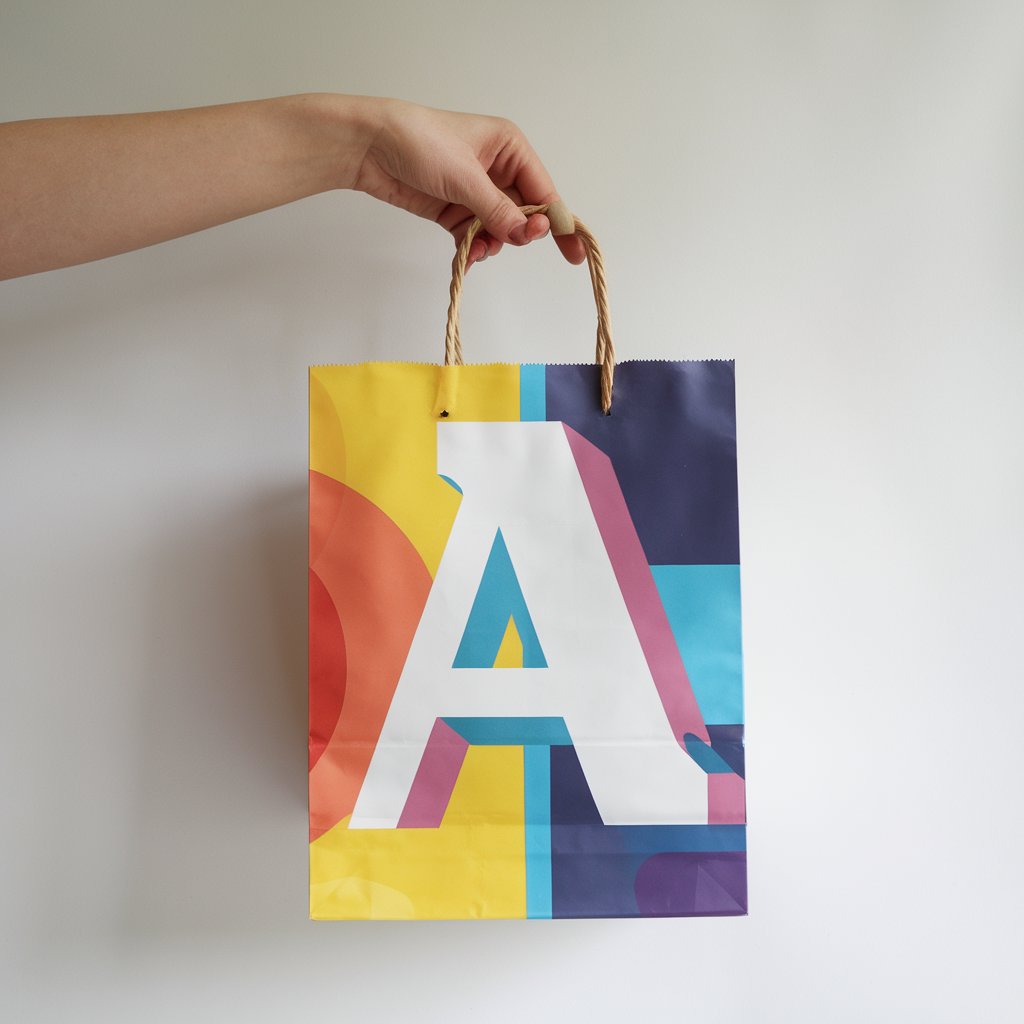
3. Designing Paper Bags with Your Logo
As a business owner, you’ve likely invested time and resources into your branding—your logo, fonts, and color palette. Your paper bag packaging should reflect and reinforce these brand elements consistently.
For a luxury brand, minimalist and elegant bag designs with subtle colors work best, while vibrant colors and bold typography are ideal for youthful and energetic brands.
Key Steps for Designing Your Paper Bags
- Choose the right type and size of paper bag (kraft paper bags, handle bags, food-grade bags, etc.).
- Upload your brand logo and design elements.
- Adjust the layout to ensure a visually balanced look.
- Select the printing method (single-color, full-color, foil stamping, etc.).
If you’re unsure about the final design, you can always order a sample first to see how it looks in real life.
4. Different Types of Paper Bag Packaging
Different industries require different types of paper bags. Here are some common examples:
- Food & Beverage Brands (e.g., bakeries, coffee shops, restaurants) → Food-grade kraft paper bags that are grease-resistant and eco-friendly.
- Fashion & Apparel Brands (e.g., boutiques, designer stores) → Premium paper bags with reinforced handles for durability and a high-end feel.
- Gift & E-commerce Brands (e.g., handmade crafts, specialty items) → Custom-printed paper bags with unique finishes like foil stamping or embossing for added exclusivity.
Branded Packaging Tape If you want to take your branding further, consider custom packaging tape with your logo. This adds an extra layer of security while also enhancing your brand visibility.
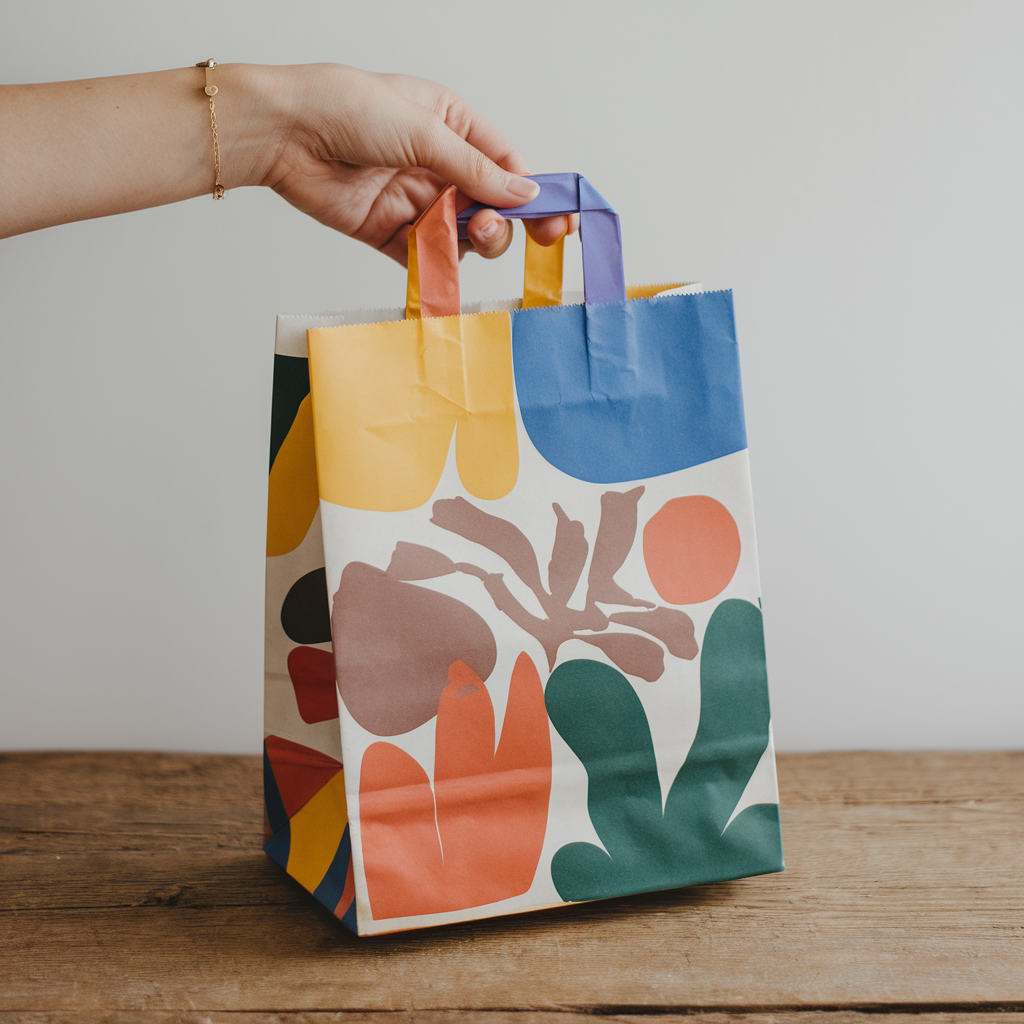
5. Practical Tips for Designing Paper Bag Packaging
Choosing the Right Material
Different materials give your packaging a unique look and feel:
- Kraft Paper Bags → Durable and eco-friendly, ideal for food and fashion brands.
- White Card Paper Bags → Smooth texture, perfect for high-end retail stores.
- Greaseproof Paper Bags → Designed for food brands selling items like pastries or fried foods.
Color & Printing
Color choices play a big role in defining your brand’s image:
- Black Paper Bags = Luxury, sophistication, exclusivity
- Natural Kraft Paper Bags = Organic, eco-friendly, rustic
- White Paper Bags = Clean, modern, minimalist
- Bright Colors (Red, Yellow, Blue, etc.) = Energetic, playful, youthful
Printing methods to consider:
- Screen Printing → Cost-effective for bulk orders, vibrant colors
- Foil Stamping → Adds a premium, metallic finish
- UV Printing → Produces detailed, high-quality graphics
Making the Most of Limited Space
Paper bags typically have limited design space, so use it wisely:
- Large logo placement → Strong brand recognition (great for trendy fashion brands)
- Small logo + slogan → Subtle yet classy (ideal for premium brands)
- Full-surface design with small logo → Perfect for creative and artistic brands
Your Paper Bag as a Marketing Tool
Branded paper bags aren’t just packaging—they’re a marketing asset. When customers carry them around, they’re spreading brand awareness effortlessly. A well-designed paper bag encourages social sharing, as many customers love posting aesthetically pleasing packaging on social media.
6. Conclusion
Branded paper bag packaging is an essential tool for brand differentiation. It not only protects your products but also enhances customer perception, builds brand loyalty, and increases visibility.
Start designing your custom paper bags now at TakeawayPack Shop! You can freely experiment with different colors, fonts, and templates to create packaging that perfectly represents your brand.
With prices as low as $0.111 per piece. upgrading your brand’s packaging is both affordable and impactful! 

This version focuses entirely on paper bags, incorporating relevant examples and details while keeping the promotional tone strong. Let me know if you’d like any further refinements! 
In this article:
- Eco-friendliness goes beyond just materials
- What truly makes packaging sustainable?
- Innovation and practicality in sustainable packaging
- Final thoughtsSustainability Is More Than Just Materials
The conversation around sustainable packaging often revolves around materials, but true sustainability extends beyond just what packaging is made of. While compostable, biodegradable, and recycled materials play an important role, factors like reusability, supply chain impact, and overall lifecycle assessment are just as crucial.
For instance, a package designed for multiple uses can significantly reduce waste and resource consumption. A durable, reusable box provides different sustainability benefits compared to single-use biodegradable packaging. In some cases, investing in reusable solutions can have a greater environmental impact than focusing solely on cutting-edge materials.
What Truly Makes Packaging Sustainable?
Eco-friendly packaging can be defined as packaging that minimizes environmental harm throughout its lifecycle. This includes:
- Renewable & Recyclable Materials: Packaging made from resources that can be replenished or easily recycled.
- Reduced Carbon Footprint: The energy and emissions involved in the production, transportation, and disposal of packaging matter.
- Reusability & Circular Economy: Packaging designed for multiple uses keeps materials in circulation longer, reducing the need for new raw materials.
- Biodegradability & Compostability: Materials that break down naturally without leaving toxic residues are ideal for a zero-waste future.
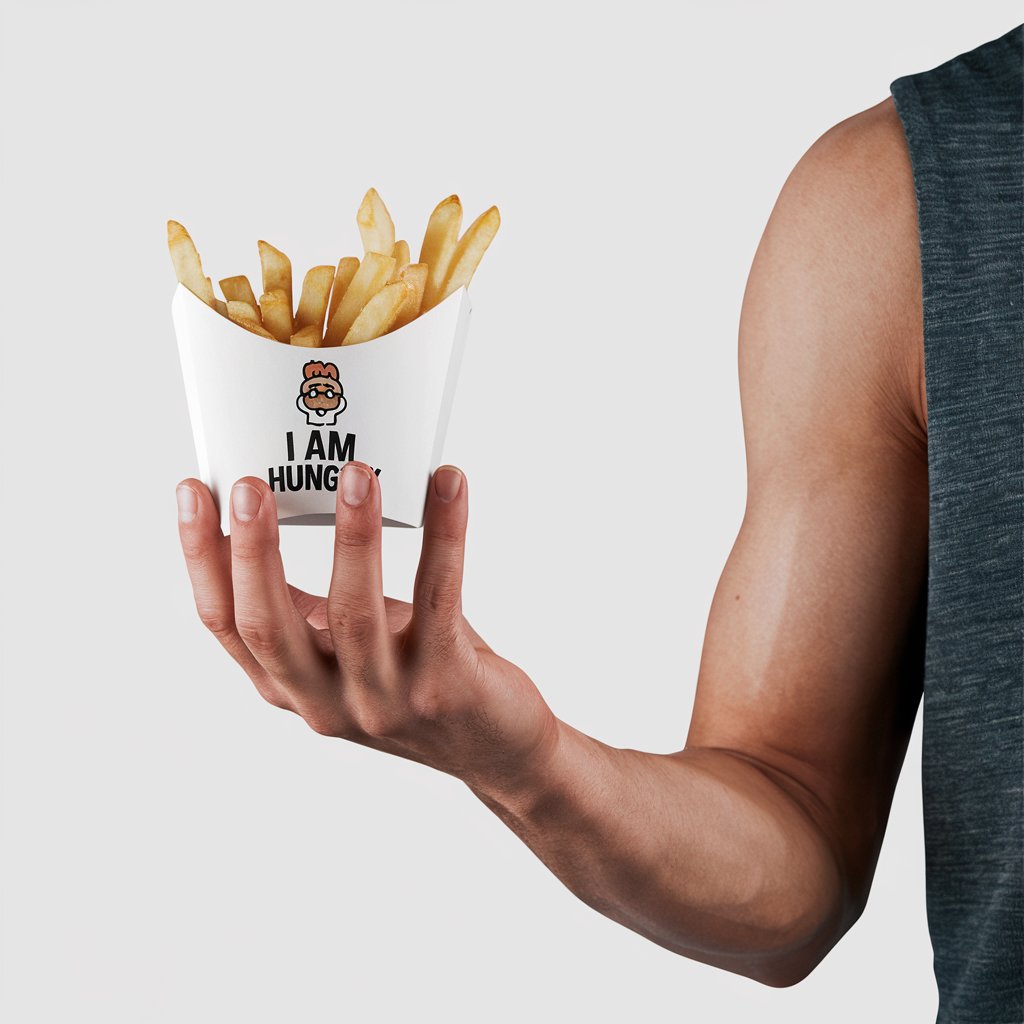
Innovation and Practicality in Sustainable Packaging
While advanced materials like hemp, mushroom-based, and seaweed packaging are gaining traction, they are not always practical or accessible for all businesses. Sustainable packaging doesn’t have to be a radical reinvention—it can be as simple as making better use of existing solutions.
Some widely available and effective eco-friendly packaging options include:
- Recycled Paper & Cardboard: A staple in sustainable packaging, widely available and easy to recycle.
- Kraft Paper: Strong and biodegradable, made from a broader range of tree sources.
- Compostable Packaging: Made from plant-based materials like cornstarch, sugarcane, and beets, breaking down in months rather than years.
- Recycled & Virgin Paper Pulp: Combining recycled fibers with new fibers ensures durability while maintaining sustainability.
Sustainable Packaging: Small Changes, Big Impact
Many businesses hesitate to adopt sustainable packaging due to cost or availability concerns. However, incorporating even small changes—such as switching to FSC-certified paper products or designing for reusability—can make a significant impact.
Ultimately, sustainability is about balance. While futuristic materials like mycelium and seaweed-based packaging show great promise, more traditional materials like recycled cardboard and kraft paper remain among the most practical, scalable, and cost-effective solutions for businesses today.
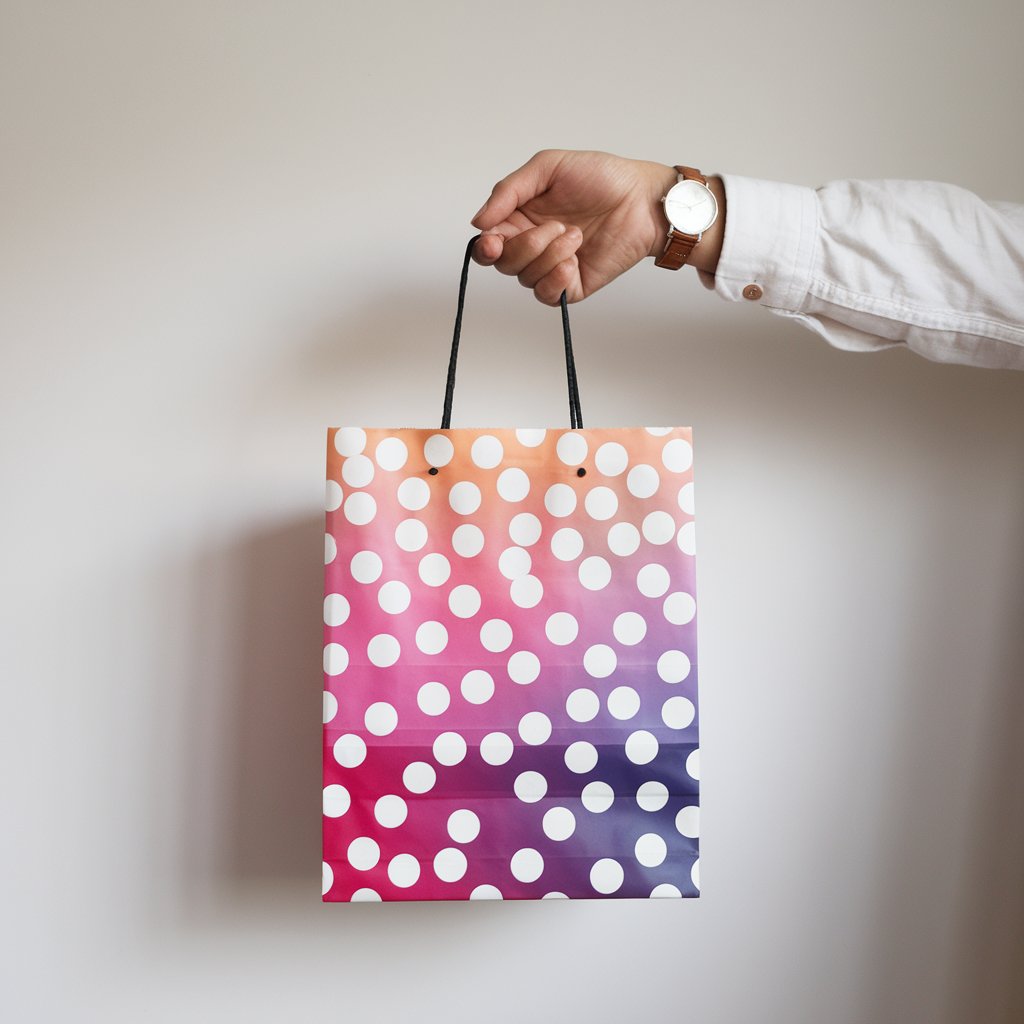
Final Thoughts
Eco-friendly packaging isn’t just about what it’s made of—it’s about how it’s used and where it goes after use. By focusing on materials, reusability, and lifecycle impact, businesses can take meaningful steps toward more sustainable packaging solutions.
At TakeawayPack, we offer a wide range of customizable, sustainable packaging solutions that fit both your brand’s needs and environmental goals. Whether it’s recyclable, biodegradable, or reusable packaging, we make it easy for businesses to go green without compromise.
]]>Do you own a boba tea business or plan to start one? This beloved Taiwanese drink has gained worldwide popularity, delighting customers with its chewy tapioca pearls and refreshing flavors. Beyond the taste, your packaging plays a crucial role in making your boba tea stand out and enhancing the customer experience. That’s why we’ve compiled some of the best boba tea shop packaging ideas to inspire you. Take a look and choose the ones that best fit your brand!
KEY TAKEAWAYS
Want your boba tea shop to stand out? The right packaging can make all the difference! Here are some fun & creative ideas to wow your customers:
✅ Clear Cups with Dome Lids – Show off those colorful layers & toppings! 🌈🥤
✅ Striped Straws – Bright, fun, and Insta-worthy! 📸🎨
✅ Custom Seals – Keep drinks fresh while flaunting your brand! 🔥🔖
✅ Takeaway Bags – Stylish, durable & convenient! 🛍🥤
✅ Boba Boxes with Inserts – Perfect for bulk orders, no spills! 📦✔
✅ Mason Jars – Trendy, reusable & eco-friendly! 🌍💚
✅ Fruit-Shaped Containers – Cute & eye-catching for social media! 🍍🍊🥤
✅ Bottled Boba – Grab-and-go convenience with sleek branding! 🚀💡
Which one fits your brand best? Let us know in the comments! 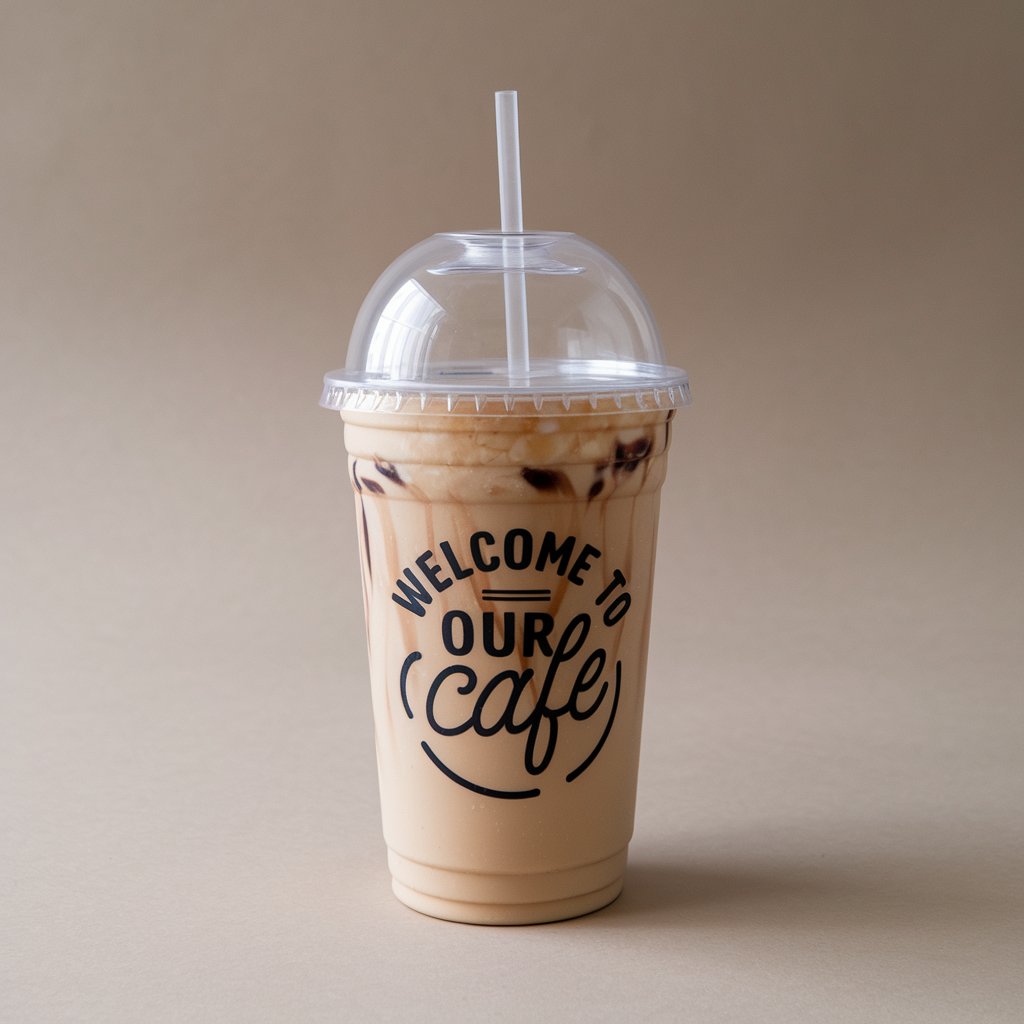
Clear Pleastic Cups with Dome Lids
Clear plastic cups allow customers to see the vibrant colors and delicious textures of their boba tea. This classic packaging choice enhances visual appeal, making drinks more Instagram-worthy. Pairing these cups with secure dome lids helps prevent spills while maintaining the ideal temperature for both hot and cold beverages. Consider customizing your cups and lids with printed logos to strengthen brand recognition.
Colorful Striped Straws
Make your drinks even more fun with bright, striped straws in colors like pink, blue, and green. These playful straws complement fruit-flavored boba drinks and add a whimsical touch that customers love. Opt for compostable paper straws or reusable plastic alternatives to align with sustainable practices. Eye-catching straws also encourage customers to share photos of their drinks on social media, boosting your shop’s online presence.
Custom Boba Tea Seals
Boba tea seals or stickers add a decorative yet functional touch, ensuring drinks remain fresh and leak-free. Custom seals featuring your logo and brand colors not only reinforce your branding but also give customers confidence in the authenticity of their drink. Easy to peel and practical, these seals provide an added layer of protection while enhancing presentation.
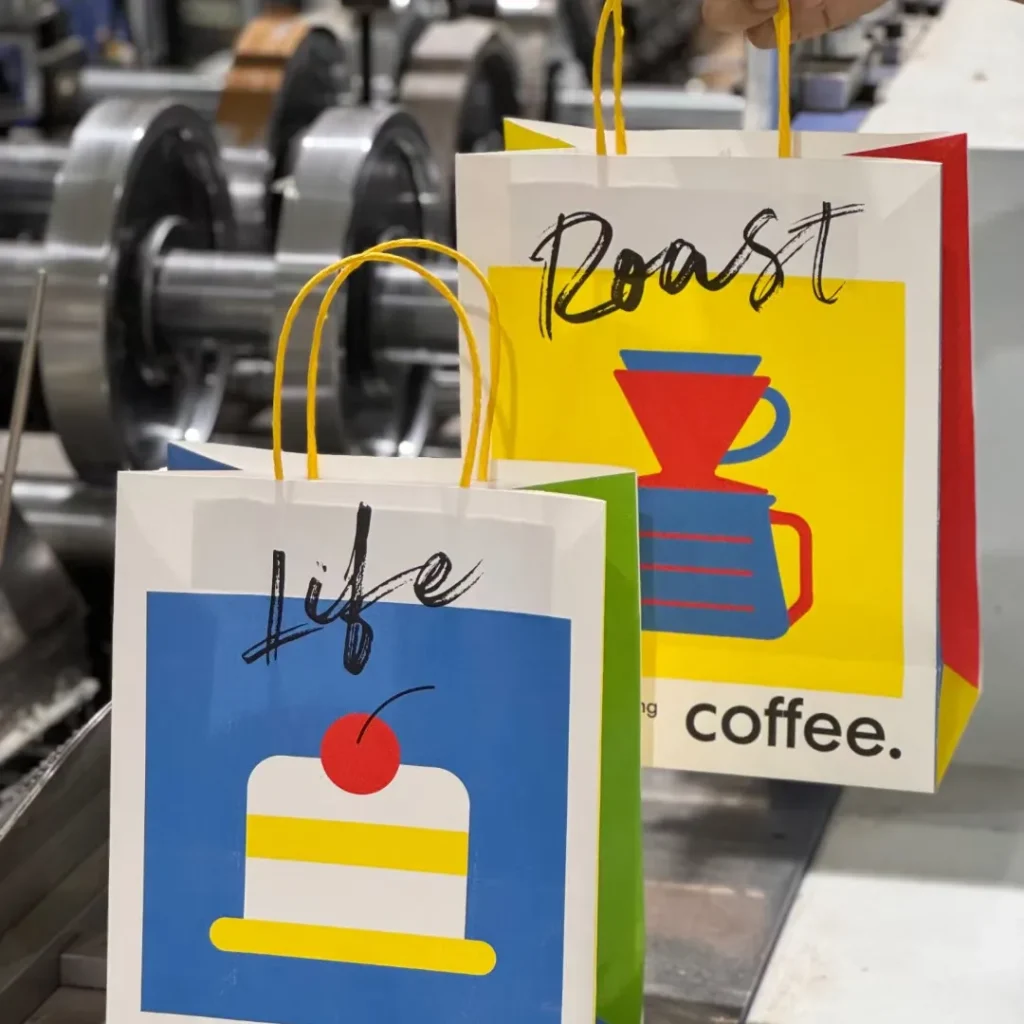
Boba Takeaway Bags
For customers who prefer their boba on the go, offer stylish and durable takeaway bags. Ideal options include kraft paper bags with polyethylene lining to prevent moisture damage. Bags with handles make carrying drinks convenient, while windowed designs allow customers to peek at their beverages before unwrapping them. Custom-printed bags featuring your logo or creative artwork can make your shop more memorable.
Boba Tea Boxes with Inserts
For larger orders, paperboard boxes with inserts provide a secure way to transport multiple drinks. Inserts keep cups upright to prevent spills, making them perfect for group takeout orders. Add custom stickers or tags with customer names and order details for a professional touch. These sturdy boxes not only improve functionality but also elevate your brand’s presentation.
Mason Jar Packaging
For a trendy and reusable packaging option, consider serving boba tea in mason jars. These glass jars provide a stylish, eco-friendly alternative to disposable cups. Pair them with metal straws and offer discounts for customers who bring their jars back for refills. Custom-etched logos or vinyl decals on the jars reinforce branding while adding an artisanal feel to your drinks.
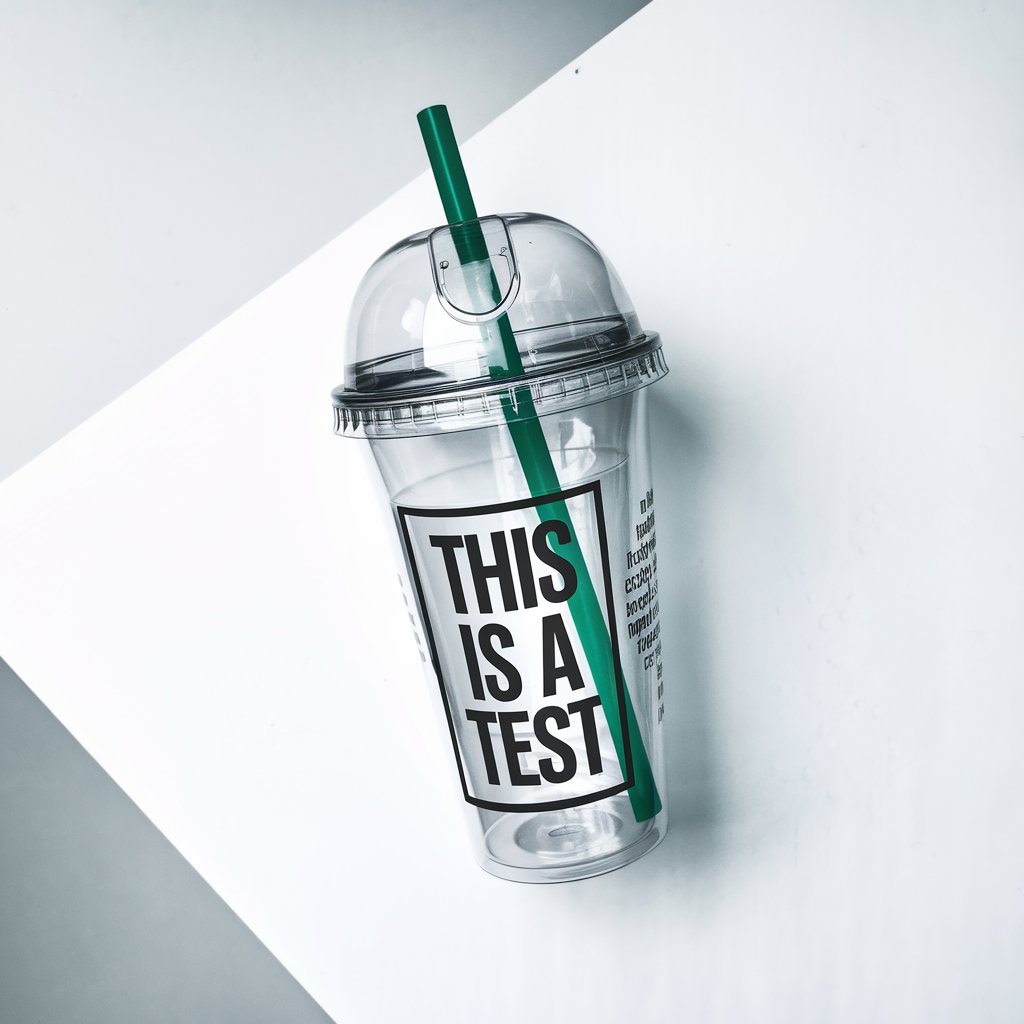
Fruit-Shaped Boba Containers
If you want to create a buzz, try using fruit-shaped drink containers. Pineapples, coconuts, oranges, and dragon fruit-inspired cups add a playful and unique touch to your shop’s aesthetic. Made from BPA-free plastic or biodegradable PLA, these fun containers are perfect for kids and customers looking for an Instagram-worthy beverage experience.
Bottle Packaging for Boba Milk Tea
Expand your menu by offering grab-and-go boba tea in bottled form. Single-serving bottles allow customers to enjoy their favorite milk teas, fruit teas, and slushes on the move. Custom labels with vibrant fruit imagery, branding elements, and nutritional information create a polished and professional look. Bottled boba tea is ideal for retail sales, making it easier for customers to enjoy your drinks anytime, anywhere.
Final Thoughts
Your packaging choices play a key role in shaping your brand identity and customer experience. Whether you opt for classic clear cups, trendy mason jars, or creative fruit-shaped containers, selecting the right packaging can set your boba tea shop apart. Choose designs that align with your brand values, enhance convenience, and create a memorable experience for your customers!
]]>KEY TAKEAWAYS:
1⃣ Chipotle Doesn’t Franchise – Unlike many restaurant chains, Chipotle operates company-owned locations, meaning direct franchising is not an option. However, you can create a similar fast-casual restaurant model inspired by its success.
2⃣ High Startup Costs – Opening a Chipotle-style restaurant requires significant investment, ranging from $867,000 to $1.7M, covering real estate, construction, equipment, branding, and marketing.
3⃣ Fresh & Customizable Menus Matter – A key to success is offering fresh ingredients, customizable meals, and signature recipes (e.g., marinated steak or house-made queso) to attract customers.
4⃣ Technology & Sustainability Are Essential – Modern ordering systems (POS, mobile apps) and eco-friendly practices (biodegradable packaging, local sourcing) help enhance customer experience and brand appeal.Is Chipotle a Franchise?
Chipotle is a well-known name in the fast-casual dining industry, offering high-quality, customizable meals. However, unlike many other brands, Chipotle does not offer franchising opportunities. The company follows a company-owned model, maintaining full control over all its locations to ensure strict quality standards and consistency.
For entrepreneurs, this means that opening an actual Chipotle franchise is not an option. However, you can draw inspiration from its business model and create your own fast-casual concept focusing on fresh ingredients, customization, and efficient operations.
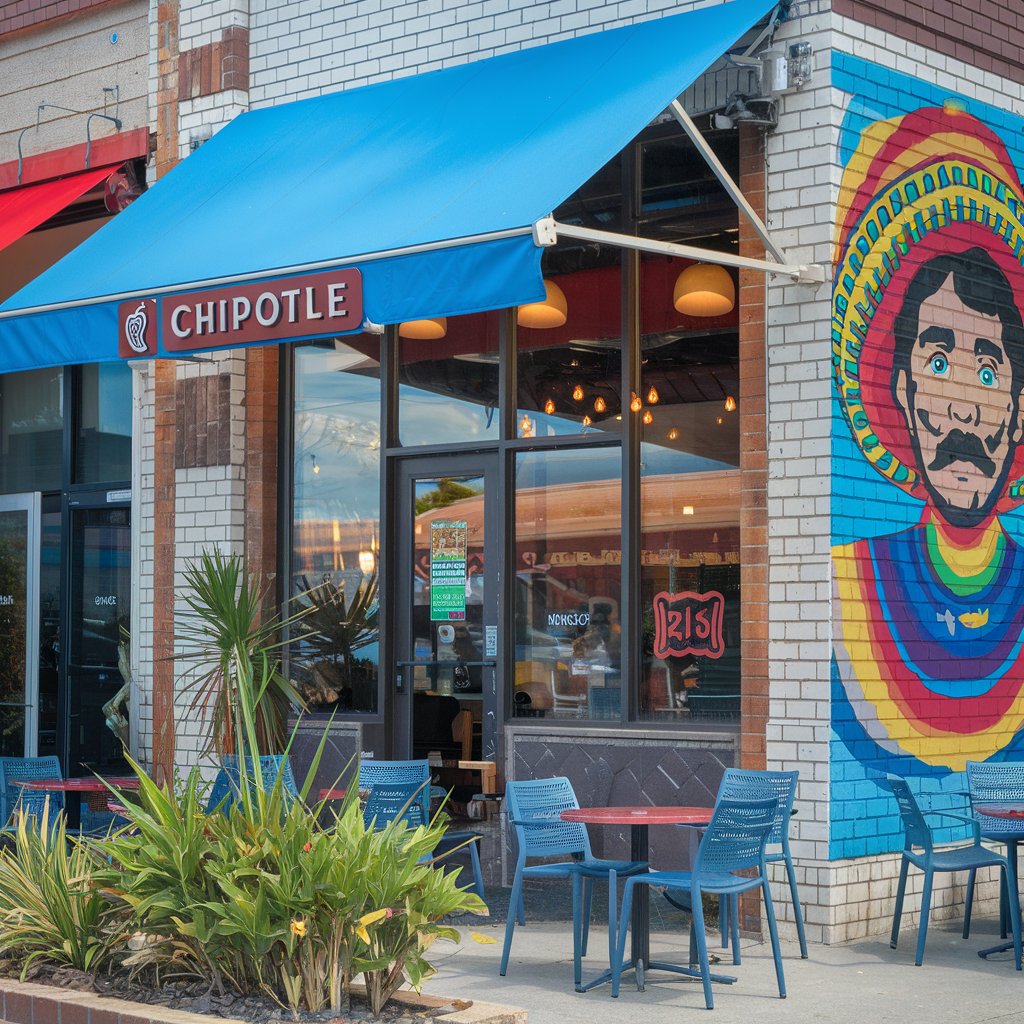
How Much Does It Cost to Open a Chipotle-Style Restaurant?
While Chipotle doesn’t franchise, starting a similar fast-casual restaurant requires careful financial planning. Here’s a breakdown of the key costs involved:
| Cost Category | Minimum Investment | Maximum Investment |
|---|---|---|
| Real Estate Costs | Varies significantly by location | Varies significantly by location |
| Site Preparation and Design | $150,000 | $450,000 |
| Construction and Renovations | $450,000 | $800,000 |
| Kitchen Equipment and Appliances | $120,000 | $170,000 |
| Furniture, Fixtures, and Interior Decor | $25,000 | $55,000 |
| Signage and Branding | $20,000 | $45,000 |
| Technology Setup (POS Systems & Online Ordering) | $30,000 | $55,000 |
| Initial Food Inventory | $12,000 | $22,000 |
| Marketing and Launch Campaign | $15,000 | $30,000 |
| Staff Training and Pre-Opening Expenses | $25,000 | $45,000 |
| Miscellaneous and Emergency Funds | $20,000 | $35,000 |
| Total Estimated Cost | $867,000 | $1,707,000 |
Cost Categories to Consider
- Real Estate & Location
 – Rental or purchase costs vary depending on city and foot traffic.
– Rental or purchase costs vary depending on city and foot traffic. - Construction & Design
 – Renovating or building a space that reflects your brand identity.
– Renovating or building a space that reflects your brand identity. - Kitchen Equipment & Supplies
 – High-quality grills, prep stations, refrigeration, and utensils.
– High-quality grills, prep stations, refrigeration, and utensils. - Marketing & Branding
 – A strong launch campaign and social media strategy to attract customers.
– A strong launch campaign and social media strategy to attract customers. - Staffing & Training
 – Hiring and training employees to maintain service efficiency.
– Hiring and training employees to maintain service efficiency.
By planning your budget wisely and making strategic decisions, you can set up a successful Chipotle-inspired restaurant.
Designing Your Menu: Inspired by Chipotle’s Success
A great menu balances simplicity, quality, and customization. Here are key elements to consider:
 Build-Your-Own Meals – Offer bases like rice, greens, or grains, paired with customizable protein and topping options.
Build-Your-Own Meals – Offer bases like rice, greens, or grains, paired with customizable protein and topping options. 


 Signature Proteins – Develop flavorful grilled chicken, steak, or pork inspired by the Chipotle restaurant steak recipe for a standout offering.
Signature Proteins – Develop flavorful grilled chicken, steak, or pork inspired by the Chipotle restaurant steak recipe for a standout offering. 

 Fresh Sides & Add-ons – Feature house-made queso, guacamole, and salsa, drawing inspiration from the Chipotle restaurant queso recipe.
Fresh Sides & Add-ons – Feature house-made queso, guacamole, and salsa, drawing inspiration from the Chipotle restaurant queso recipe. 

 Seasonal Specials – Rotate limited-time menu items to keep customers excited.
Seasonal Specials – Rotate limited-time menu items to keep customers excited. 

 Sustainable Packaging – Serve meals in custom eco-friendly food packaging that aligns with your brand identity.
Sustainable Packaging – Serve meals in custom eco-friendly food packaging that aligns with your brand identity. 

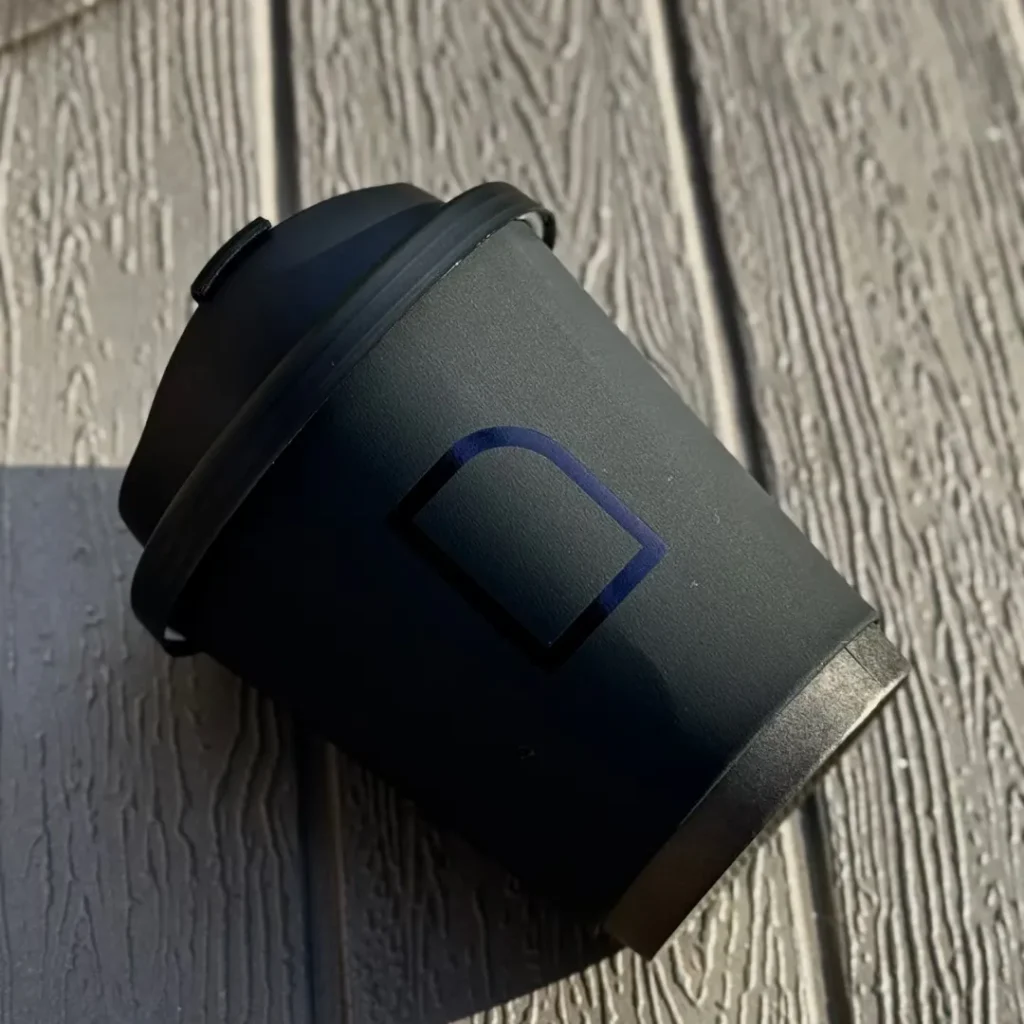
Key Success Factors for a Chipotle-Inspired Restaurant
To thrive in the fast-casual dining market, focus on these essentials:
 Fresh & High-Quality Ingredients – Sourcing locally for better taste and sustainability.
Fresh & High-Quality Ingredients – Sourcing locally for better taste and sustainability. Customization & Efficiency – Implementing an assembly-line kitchen model for quick service.
Customization & Efficiency – Implementing an assembly-line kitchen model for quick service. Technology & Convenience – Mobile ordering, delivery platforms, and seamless payment systems.
Technology & Convenience – Mobile ordering, delivery platforms, and seamless payment systems. Eco-Friendly Practices – Using biodegradable packaging, energy-efficient equipment, and ethical sourcing.
Eco-Friendly Practices – Using biodegradable packaging, energy-efficient equipment, and ethical sourcing. Strong Branding – From in-store design to custom packaging with logos, ensure consistency across all touchpoints.
Strong Branding – From in-store design to custom packaging with logos, ensure consistency across all touchpoints.
Conclusion
Opening a Chipotle-style restaurant offers a rewarding opportunity in the booming fast-casual industry. By understanding the investment required, crafting a fresh and customizable menu, and focusing on operational efficiency, you can create a thriving business that resonates with modern consumers.
 Want to enhance your restaurant’s branding and sustainability? TakeawayPack offers custom food packaging solutions that help your restaurant stand out.
Want to enhance your restaurant’s branding and sustainability? TakeawayPack offers custom food packaging solutions that help your restaurant stand out. 

 Contact us today: [email protected]
Contact us today: [email protected]
With the rising demand for healthy eating, salads have become a go-to choice for low-calorie, nutrient-rich meals. This article explores innovative salad shop packaging ideas that not only preserve freshness but also reinforce a brand’s health-conscious and eco-friendly image.
KEY TAKEAWAYS:
✅ See the Freshness – Transparent packaging highlights vibrant ingredients! 🥬🥕
✅ Go Green – Use biodegradable bowls, recycled paper bags & plant-based containers 🌍♻
✅ Minimal & Chic – Simple, natural designs with earthy tones for a clean, organic feel 🎨🛍
✅ Smart Packaging – Compartmentalized containers keep ingredients fresh & crisp! 🥜🥗
✅ Nature-inspired Branding – Leafy patterns & eco-friendly messaging attract health-conscious customers 🍃💚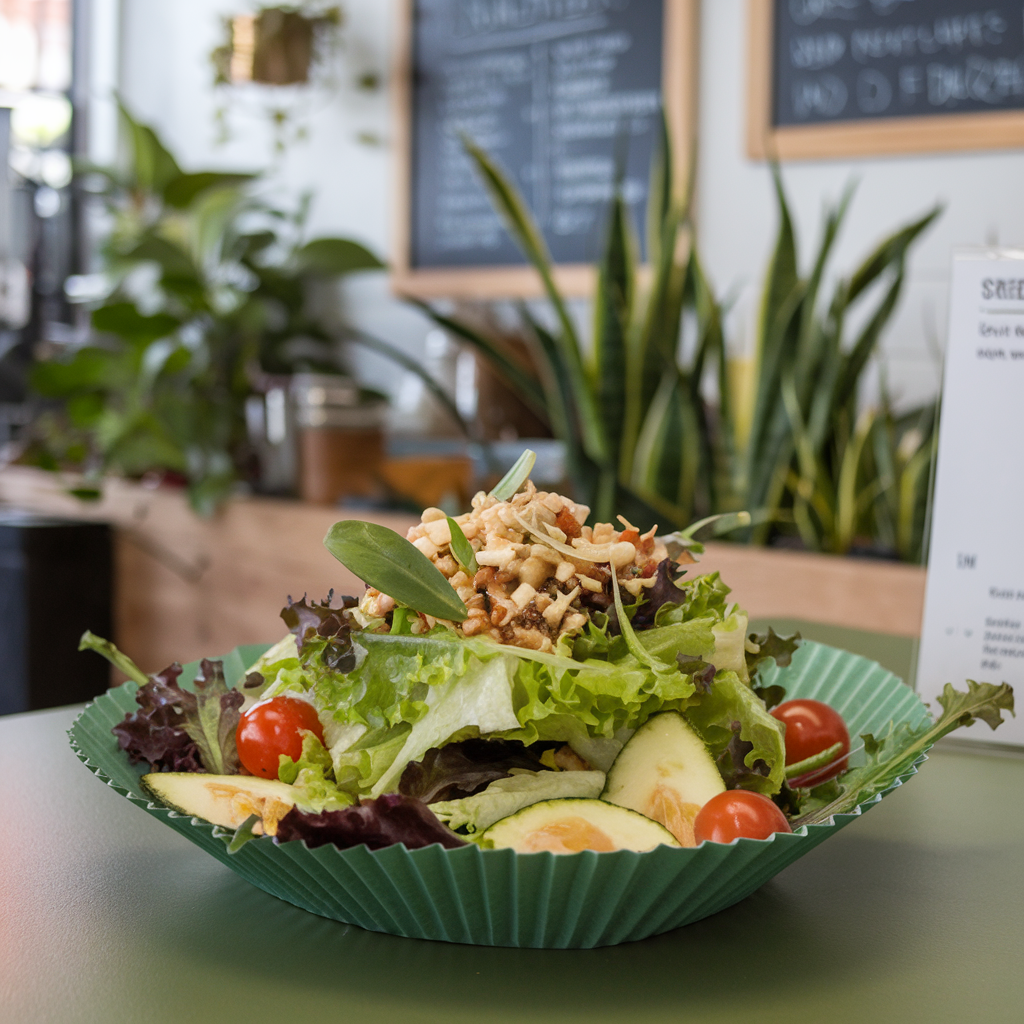
The Growing Popularity of Healthy Salads
Increased Health Awareness
As people become more mindful of their diets, there is a stronger focus on consuming foods that provide essential nutrients while supporting overall wellness. Salads, known for their low-calorie yet fiber-rich, vitamin-packed ingredients, are now a staple in many diets worldwide.
Diverse and Customizable Options
Salads offer immense variety, incorporating fresh vegetables, fruits, nuts, beans, proteins (chicken, beef, fish), and dairy (cheese, yogurt). This flexibility allows consumers to tailor meals to their tastes and dietary preferences.
Convenience for Busy Lifestyles
With hectic schedules, consumers seek quick, healthy meal options. Pre-packaged salads available in supermarkets and restaurants cater to professionals and students who prioritize health but have limited time for meal preparation.
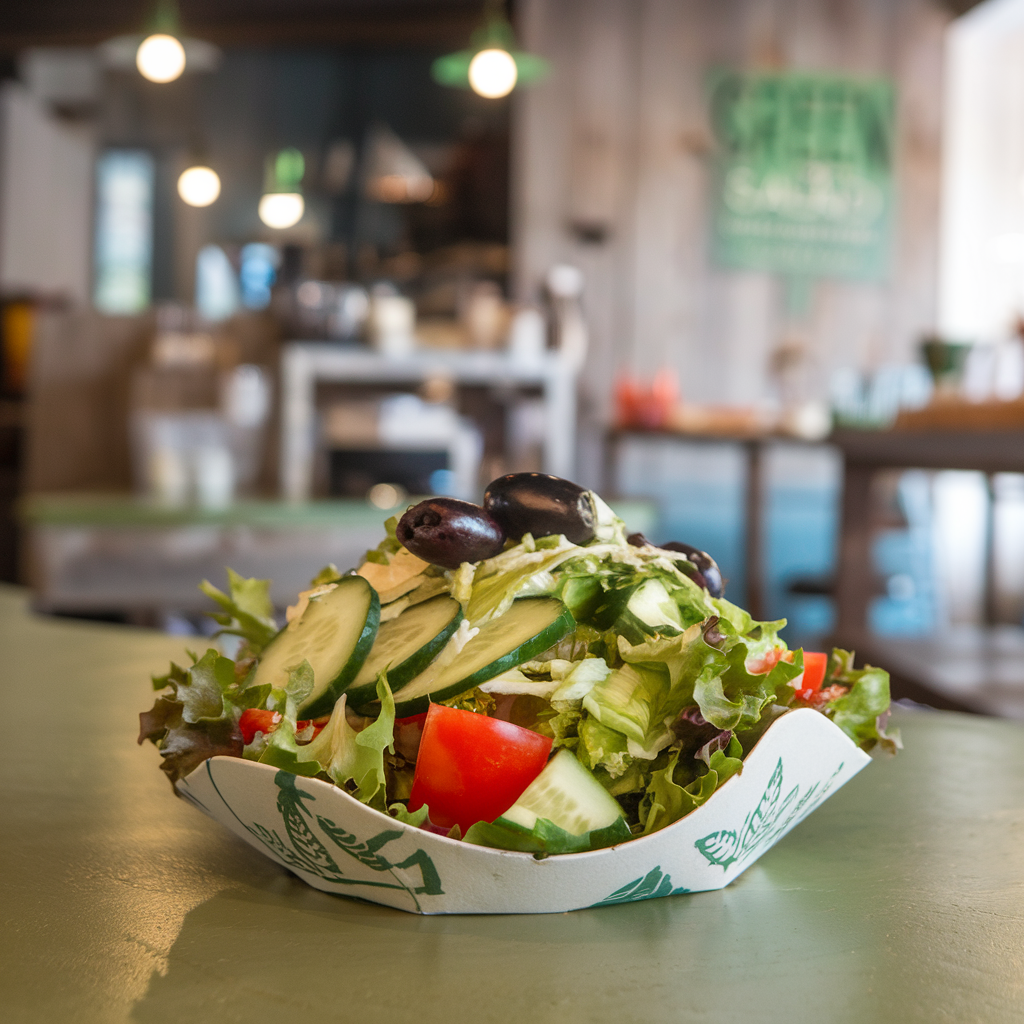
Prioritizing Health and Sustainability in Salad Shop Packaging
To reinforce a salad shop’s commitment to wellness and sustainability, choosing the right packaging is essential. Opting for eco-friendly materials like compostable containers and recyclable packaging not only aligns with environmental values but also enhances a brand’s reputation among health-conscious consumers.
Choosing the Right Salad Shop Packaging Materials
Transparent and Fresh-Preserving Materials
Using clear or semi-transparent packaging allows customers to see the fresh ingredients inside, making the product visually appealing. Clamshell containers, for instance, effectively highlight the vibrant colors of a garden salad, attracting buyers looking for freshness and quality.
Sustainable and Biodegradable Options
Selecting biodegradable or recyclable packaging materials, such as paper or bioplastics, minimizes environmental impact while reinforcing a brand’s sustainability efforts. Compostable salad bowls, recycled paper bags, and plant-based containers provide eco-conscious customers with guilt-free packaging solutions.
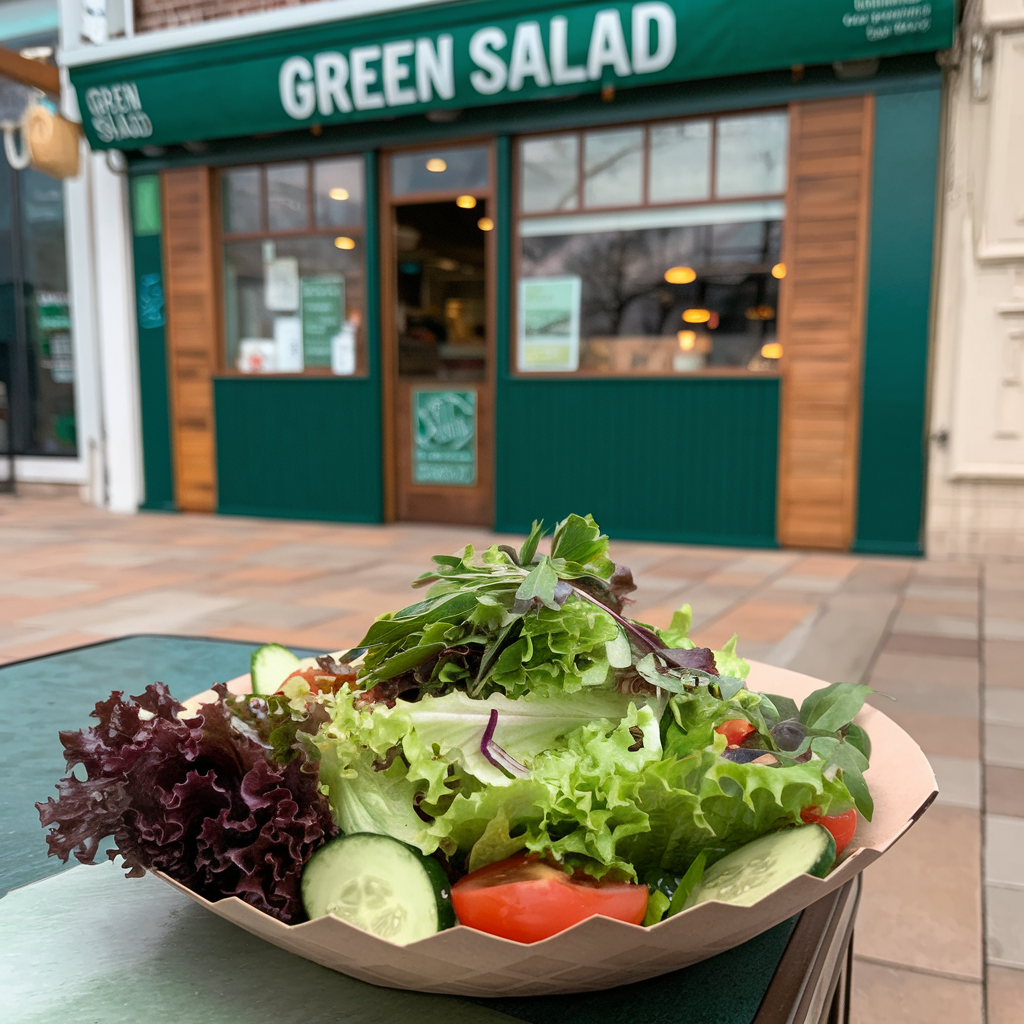
Smart Packaging Design Salad Shop Packaging
Natural Color Schemes
Utilizing earthy tones like green and brown in packaging can evoke a sense of nature, health, and freshness. These colors align with the organic essence of salads and appeal to eco-friendly consumers.
Minimalist and Clean Aesthetic
A simple and elegant design enhances product visibility while reducing clutter. Clear fonts, minimal branding, and a sleek, natural look create a sophisticated yet approachable brand identity. A kraft paper box with a clear window and a subtle logo, for example, effectively conveys a wholesome, natural message.
Functional and Innovative Packaging Structures
Creative packaging structures, such as compartmentalized containers, help keep ingredients fresh until consumption. Separate sections for dressings, nuts, or croutons maintain texture and flavor, ensuring a better customer experience. Innovative divided containers also add convenience for on-the-go consumers.
Nature-inspired Patterns and Branding
Incorporating plant motifs or illustrations of leafy greens on packaging reinforces the freshness and health benefits of salads. Such designs create an emotional connection with health-conscious buyers, making the product stand out on store shelves.
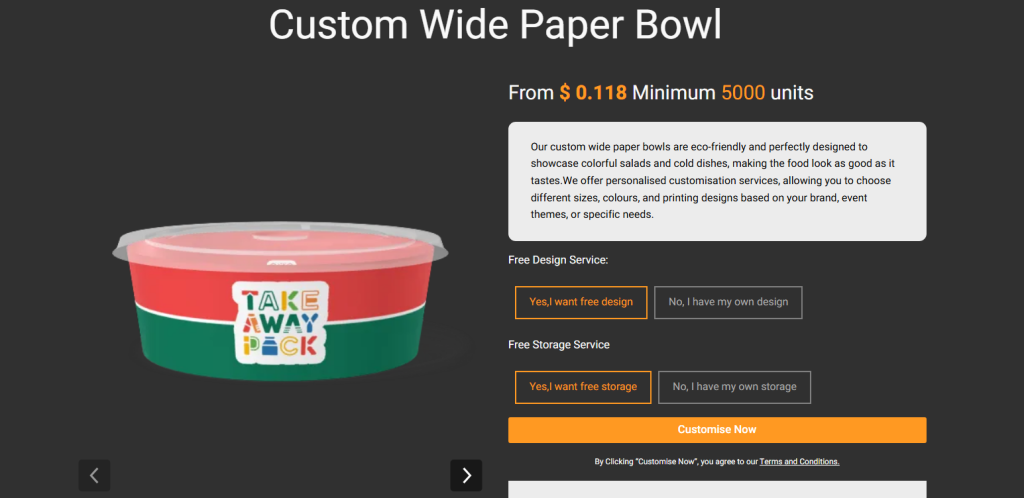
Conclusion
Implementing smart packaging solutions enhances a salad shop’s brand identity by showcasing a commitment to health and sustainability. By focusing on transparency, eco-friendly materials, minimalist design, innovative structures, and nature-inspired aesthetics, salad businesses can attract and retain health-conscious customers.
TakeawayPack specializes in crafting sustainable, visually appealing packaging that aligns with these principles. Let us help you design the perfect packaging to elevate your brand and make your salads stand out in a competitive market.
For more details on how TakeawayPack can support your business, contact us at [email protected].
]]>Worried about how to keep your fried chicken crispy or dealing with packaging challenges?
Our Fried Chicken Restaurant Packaging Guide is here to address your concerns. If your food isn’t staying hot or customers are facing packaging-related issues, don’t worry. This guide will walk you through the best packaging solutions to keep your fried chicken fresh and flavorful while ensuring a positive customer experience.
By the end of this guide, you’ll know how to package fried chicken that stays warm, looks appealing, and boosts your brand. Let’s dive in!
KEY TAKEAWAYS:
🍗 Keep Your Fried Chicken Hot & Crispy! 🔥
Struggling with soggy chicken or packaging that doesn’t hold up? 😩 Our Fried Chicken Restaurant Packaging Guide has got you covered! ✅
📦 Best Packaging Options: Cardboard boxes, foil containers, and more!
🔥 Heat Retention Tips: Keep food fresh and crispy every time!
🎨 Branding Boost: Custom packaging = more customer love! 💕
🌱 Eco-Friendly Choices: Go green with sustainable packaging!
Make sure your chicken arrives hot, crispy, and delicious—just the way customers love it! 😍🍟 Read the full guide now! 🚀
Why Packaging Matters for Fried Chicken
Packaging is essential to maintaining the quality and presentation of fried chicken. The right packaging ensures your chicken remains crispy, hot, and moisture-free, preventing sogginess and preserving that crispy texture. This is particularly important for takeout and delivery, where food may be transported for an extended period. Without proper packaging, fried chicken can lose its crispiness and appeal.
Additionally, packaging serves as a branding tool. Custom-designed packaging with your restaurant’s logo and color scheme can make your establishment memorable and keep customers coming back for more. Good packaging doesn’t just protect the food—it reinforces your brand and enhances the customer experience.
Types of Packaging for Fried Chicken
Here are several packaging options, each with its pros and cons. Choosing the right one will depend on your restaurant’s needs and goals.
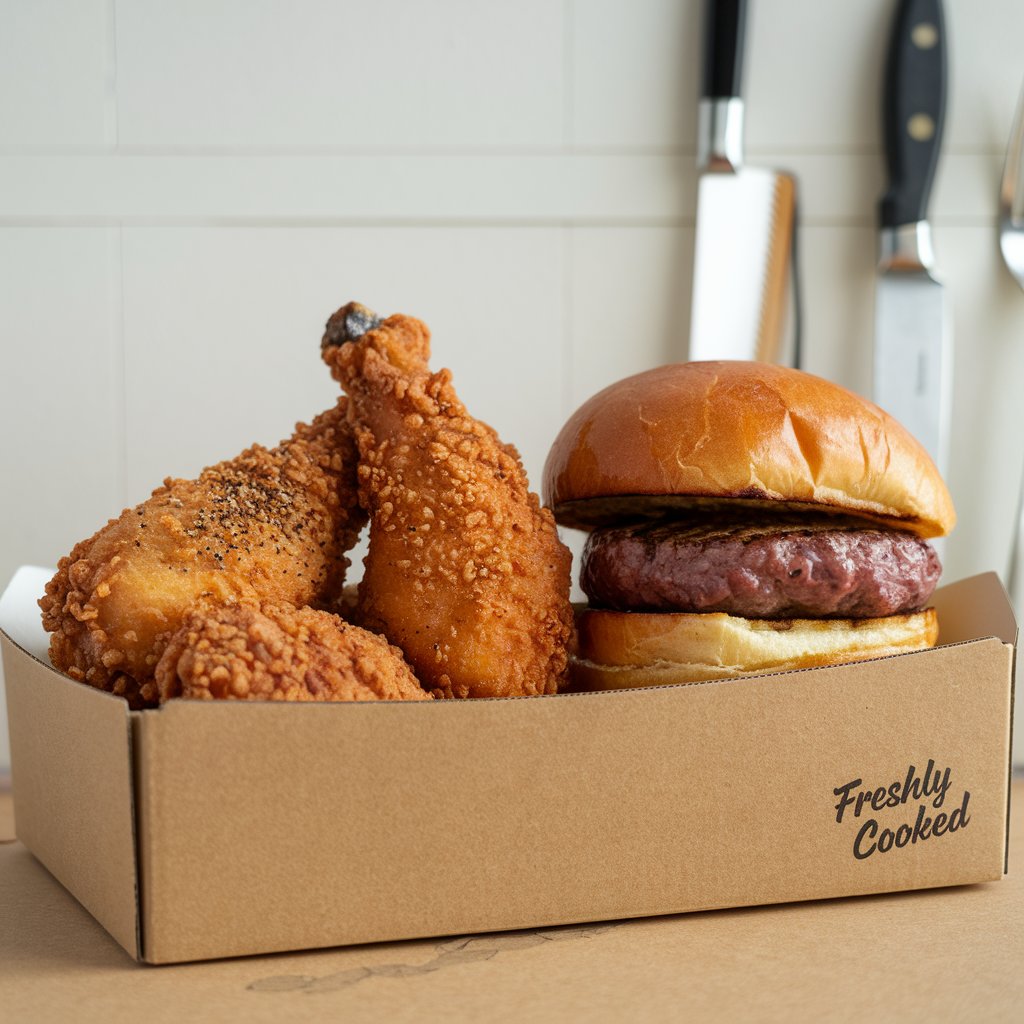
Cardboard Boxes
Cardboard boxes are one of the most popular choices for packaging fried chicken. They’re sturdy, customizable, and environmentally friendly. These boxes work well for keeping food warm and are perfect for serving fried chicken in a variety of portion sizes. However, without proper lining, they can become soggy, making them less effective for longer deliveries.
- Pros:
- Keeps food warm
- Customizable for branding
- Eco-friendly and recyclable
- Durable for various portion sizes
- Cons:
- Can become soggy if not lined properly
- Less effective for long-distance delivery
- Bulky and takes up space
- Doesn’t retain crispiness as well as other options
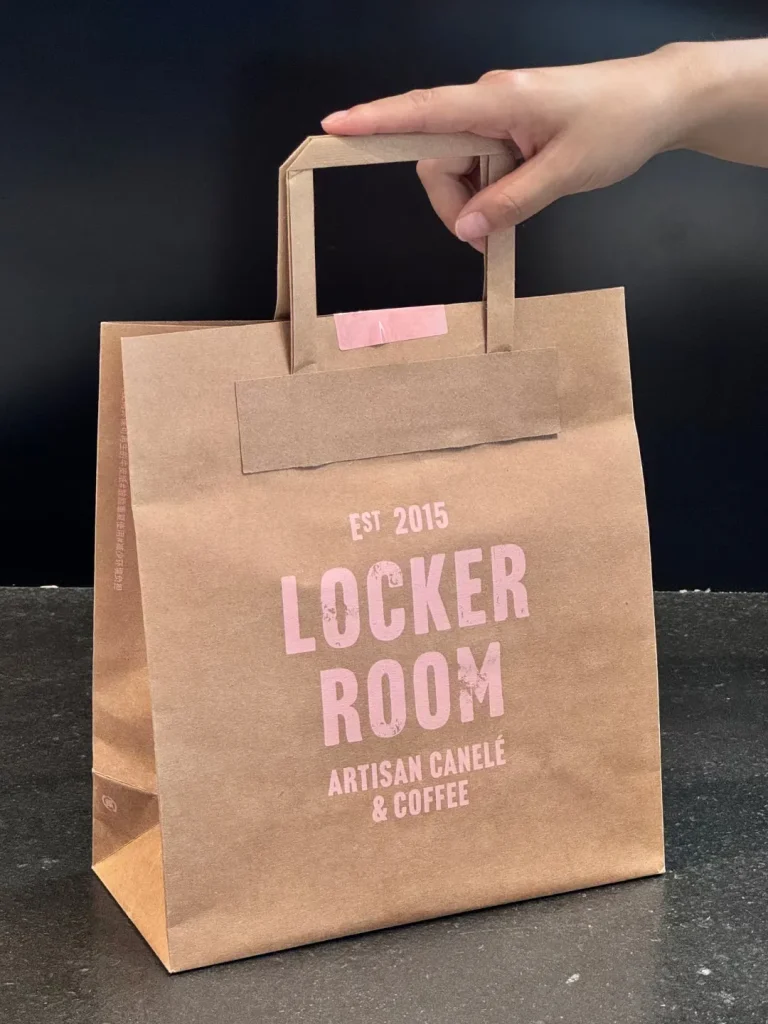
Paper Bags
Paper bags are light, cost-effective, and biodegradable, making them a popular option for casual dining or smaller orders. While they are easily customizable, they don’t do much to keep the food hot or crispy, especially for long deliveries.
- Pros:
- Lightweight and inexpensive
- Customizable with prints
- Biodegradable and recyclable
- Easy to handle
- Cons:
- Poor heat retention
- Not durable enough for heavier items
- Prone to tearing
- Less effective at maintaining crispiness
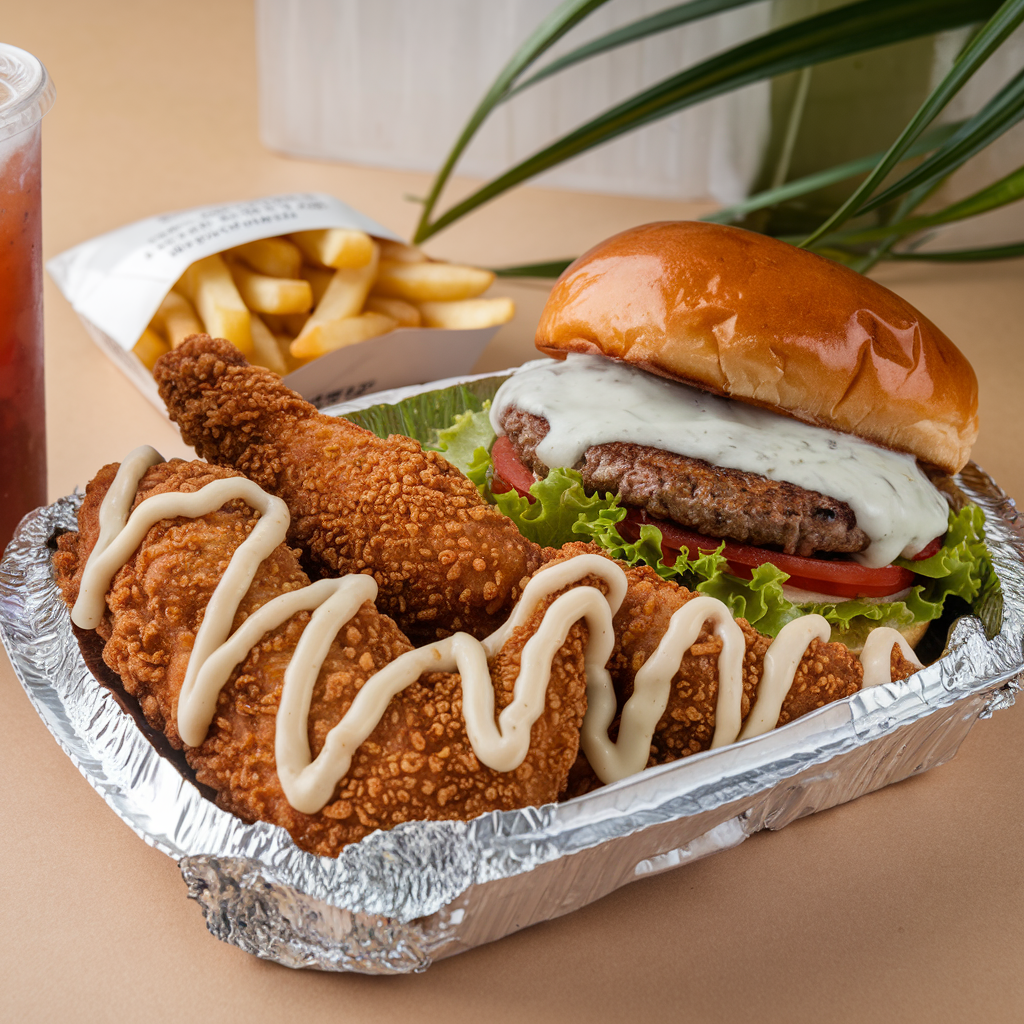
Foil Containers
Foil containers are another great option for keeping fried chicken crispy. They are highly effective at maintaining temperature and moisture, which is perfect for takeout. However, they are less customizable, prone to dents, and not as durable as other options.
- Pros:
- Great heat retention
- Keeps food crispy
- Seals tightly to prevent leaks
- Good for both single and large orders
- Cons:
- Limited customization options
- Easily dented or bent
- Not as eco-friendly
- Less durable for heavy items
Key Points for Effective Packaging
When designing packaging for your fried chicken, there are several factors to keep in mind to ensure that it meets your business’s needs:
Heat Retention:
Choose packaging that retains heat without trapping moisture. This will help maintain the crispy texture of your fried chicken, which is crucial for customer satisfaction.
Portion Sizes:
Packaging should be appropriately sized for the portions you serve. This reduces waste and ensures that customers get exactly what they expect. Oversized packaging can lead to unnecessary costs, while undersized packaging can lead to spills or an unappealing presentation.
Branding and Design:
Your packaging is an extension of your restaurant’s brand. Custom-designed packaging with your logo, color scheme, and restaurant theme makes a lasting impression. It can even act as a marketing tool by reminding customers of your brand every time they use it.
Sustainability:
Today’s customers are increasingly eco-conscious. Consider using recyclable or biodegradable packaging materials to appeal to this growing demographic. It shows that you care about the environment, which can help build trust with your customer base.
Convenience Features:
Look for packaging options that offer extra features such as compartments for sauces, easy-to-open designs, and spill-proof seals. These thoughtful touches can elevate the customer experience and make them more likely to return.
Tips for Success
To ensure the effectiveness of your packaging strategy, here are some additional tips:
Test Your Packaging:
Before making a large-scale investment in packaging, test different options. Gather feedback from staff and customers to determine which packaging works best for your needs.
Stay Current:
Keep an eye on packaging trends and innovations. As packaging technology evolves, new options may offer better functionality or eco-friendliness.
Train Your Staff:
Proper training is essential to ensure that your staff knows how to package food correctly. Consistency in packaging is key to delivering a consistent customer experience.
Monitor and Adjust:
Continually assess the performance of your packaging. If customers report issues or if the packaging isn’t meeting your expectations, don’t hesitate to make adjustments.
Conclusion
Effective packaging is the backbone of any fried chicken restaurant. It ensures that your food stays fresh, maintains your brand identity, and enhances the customer experience. By following this guide, you can select the right packaging that keeps your fried chicken hot, crispy, and ready to impress your customers. Whether you’re serving up a casual meal or packaging for delivery, the right packaging will make all the difference in the satisfaction of your customers and the success of your business.
]]>